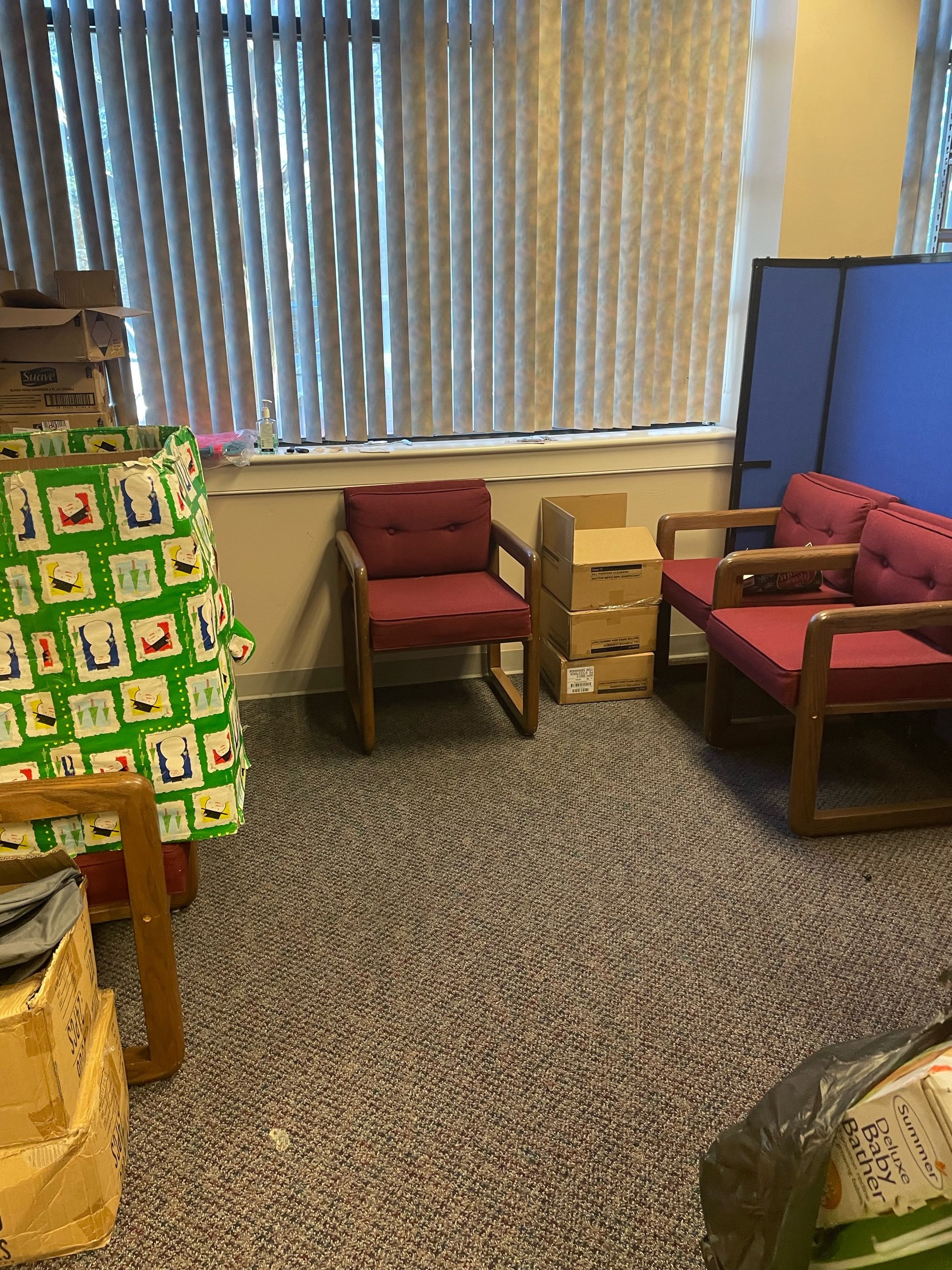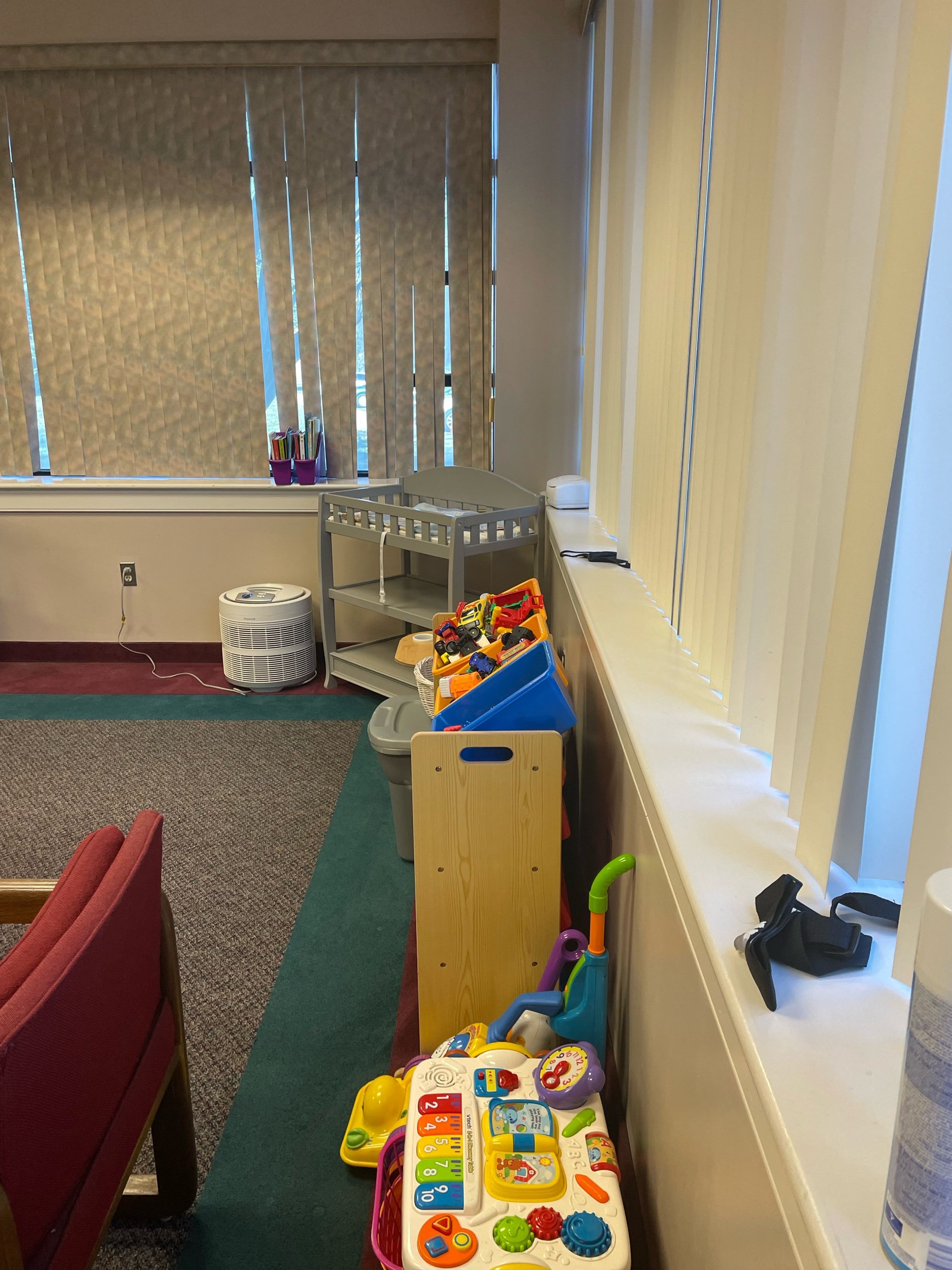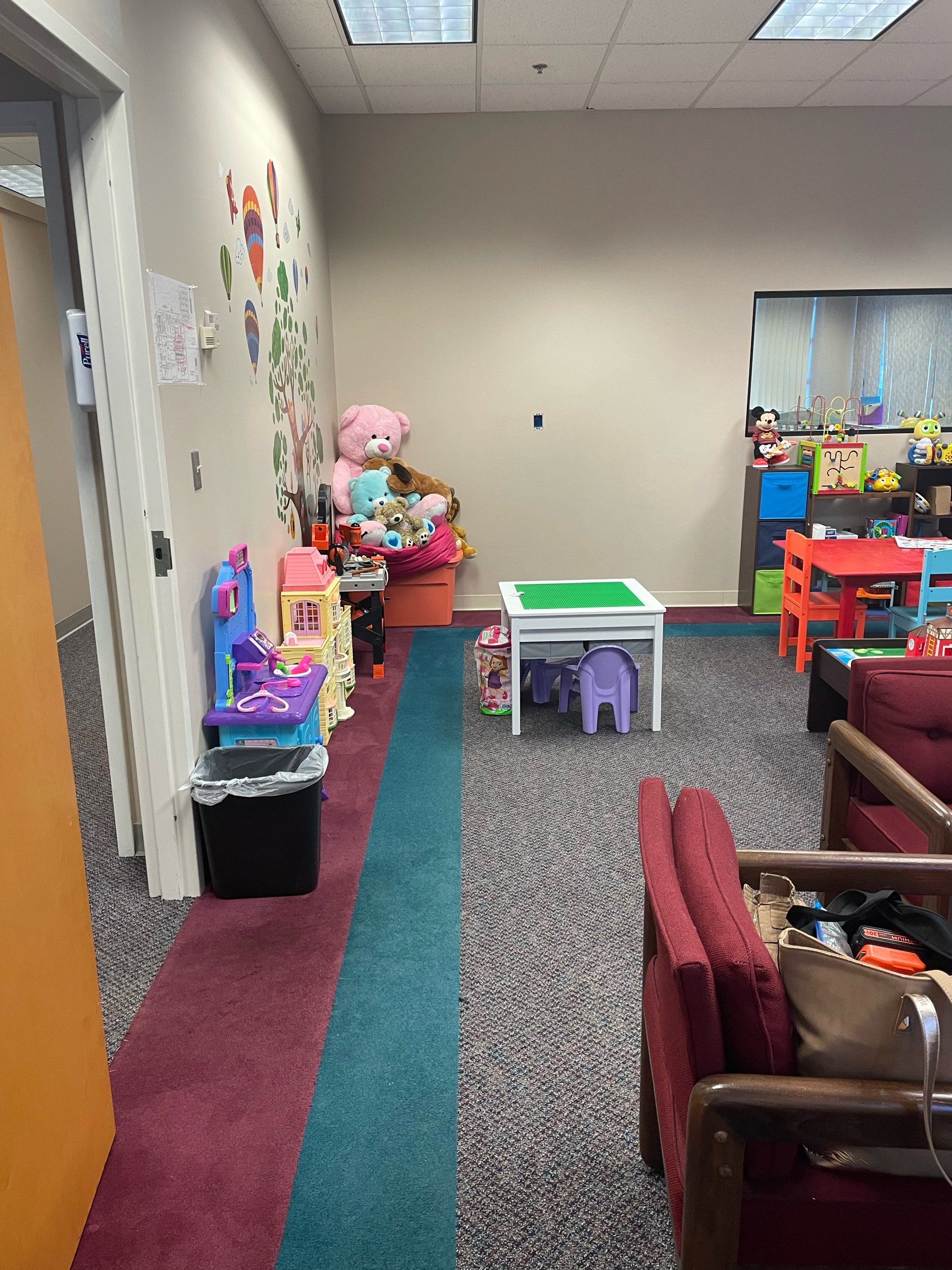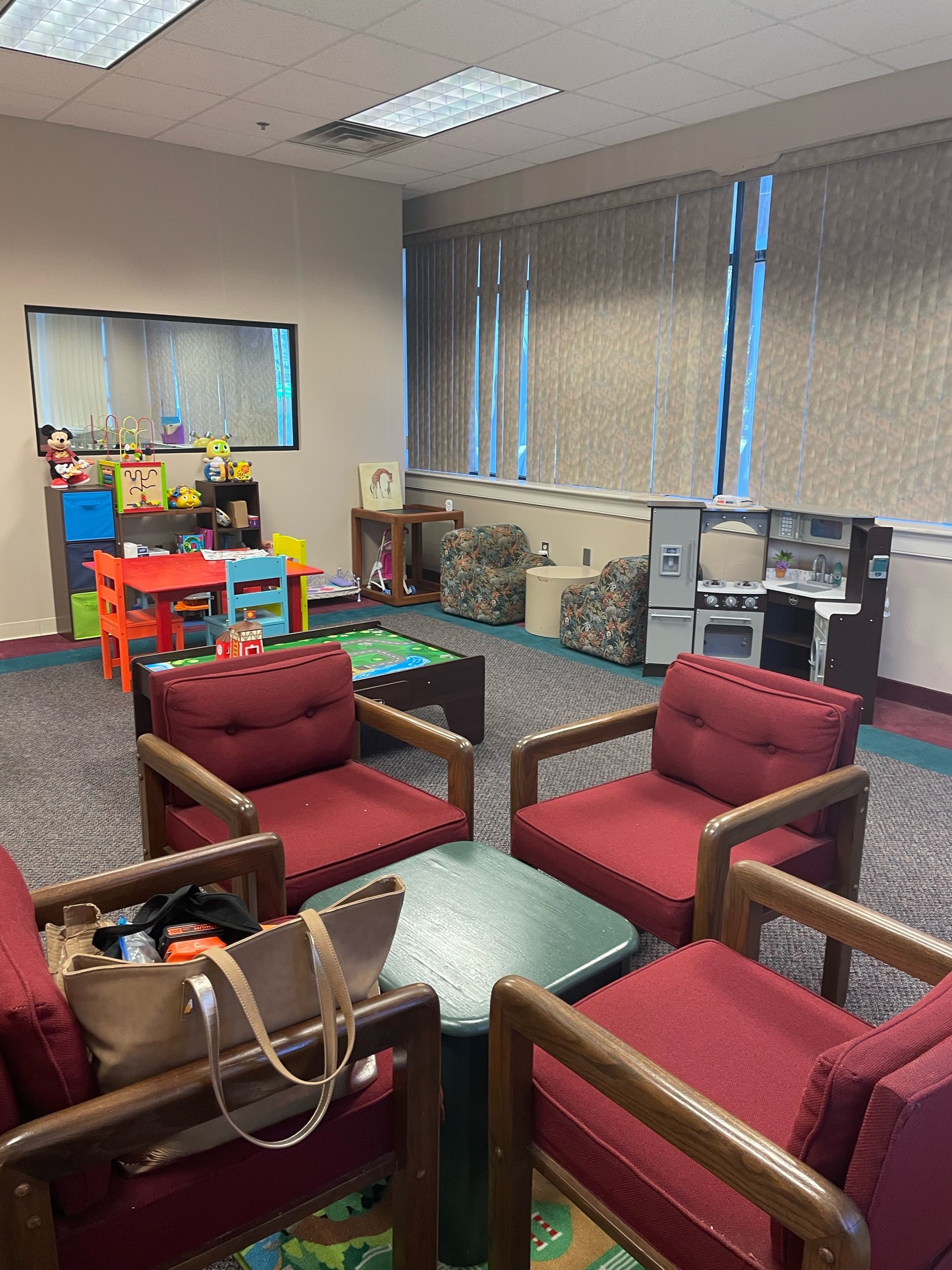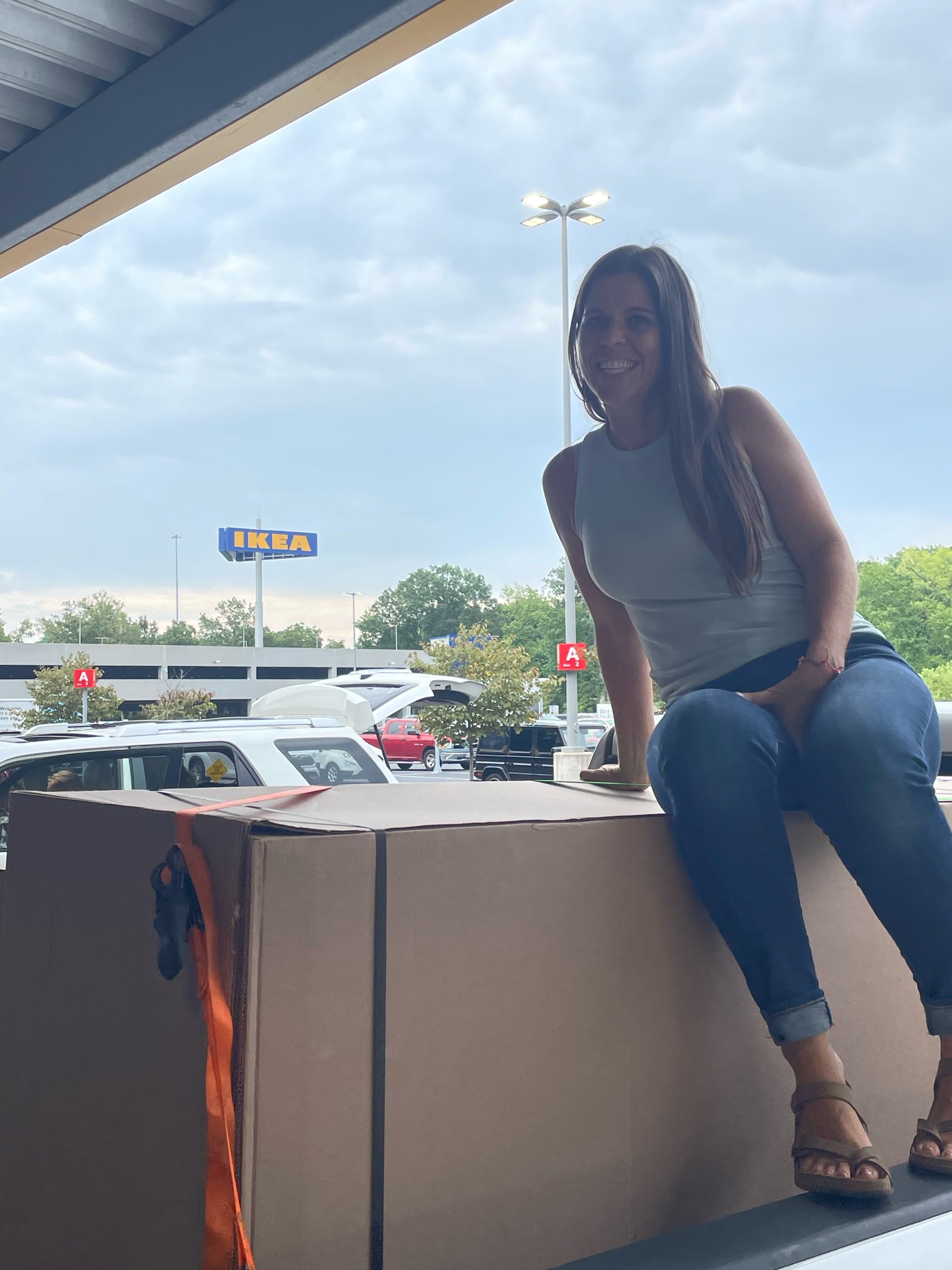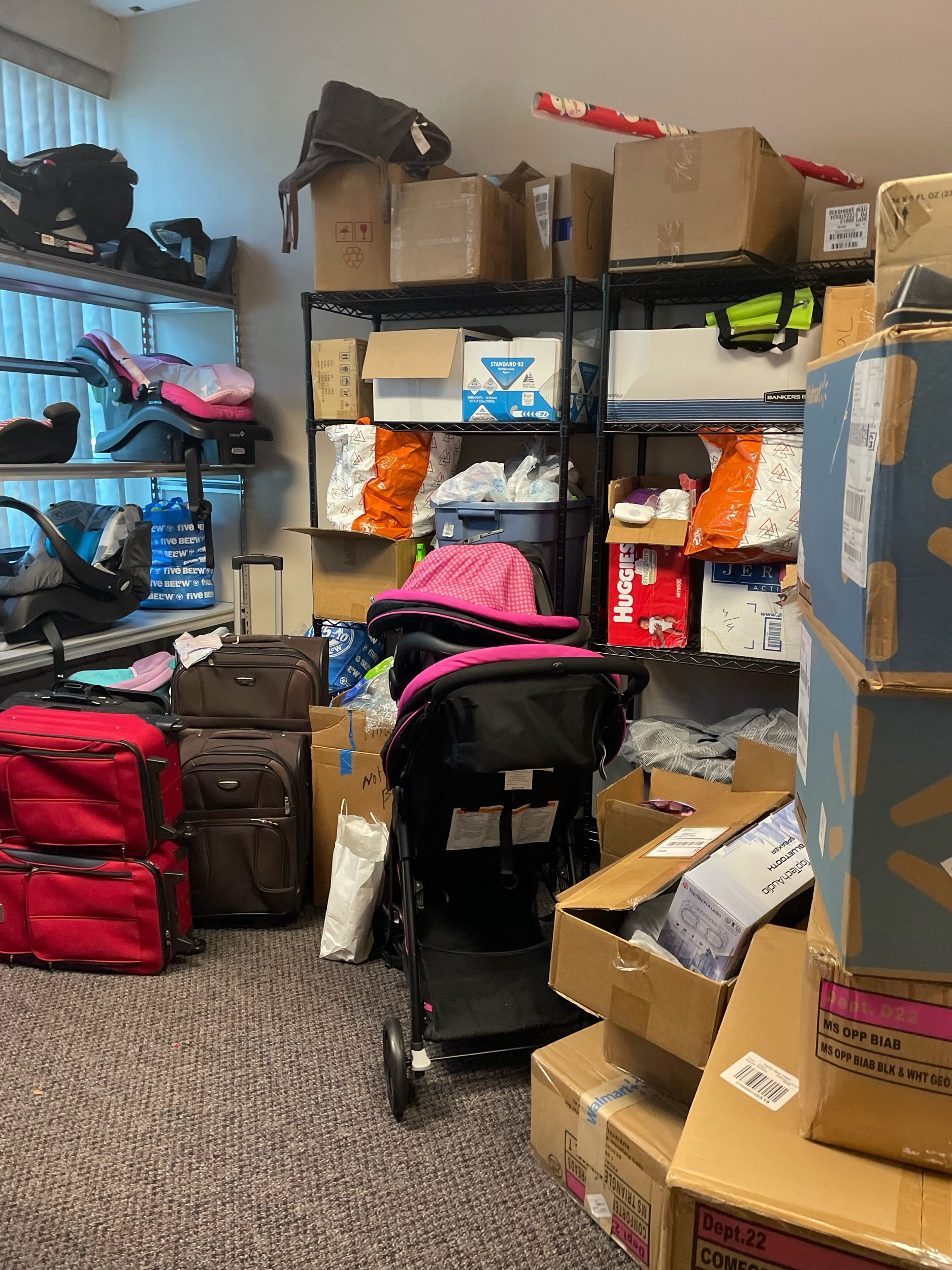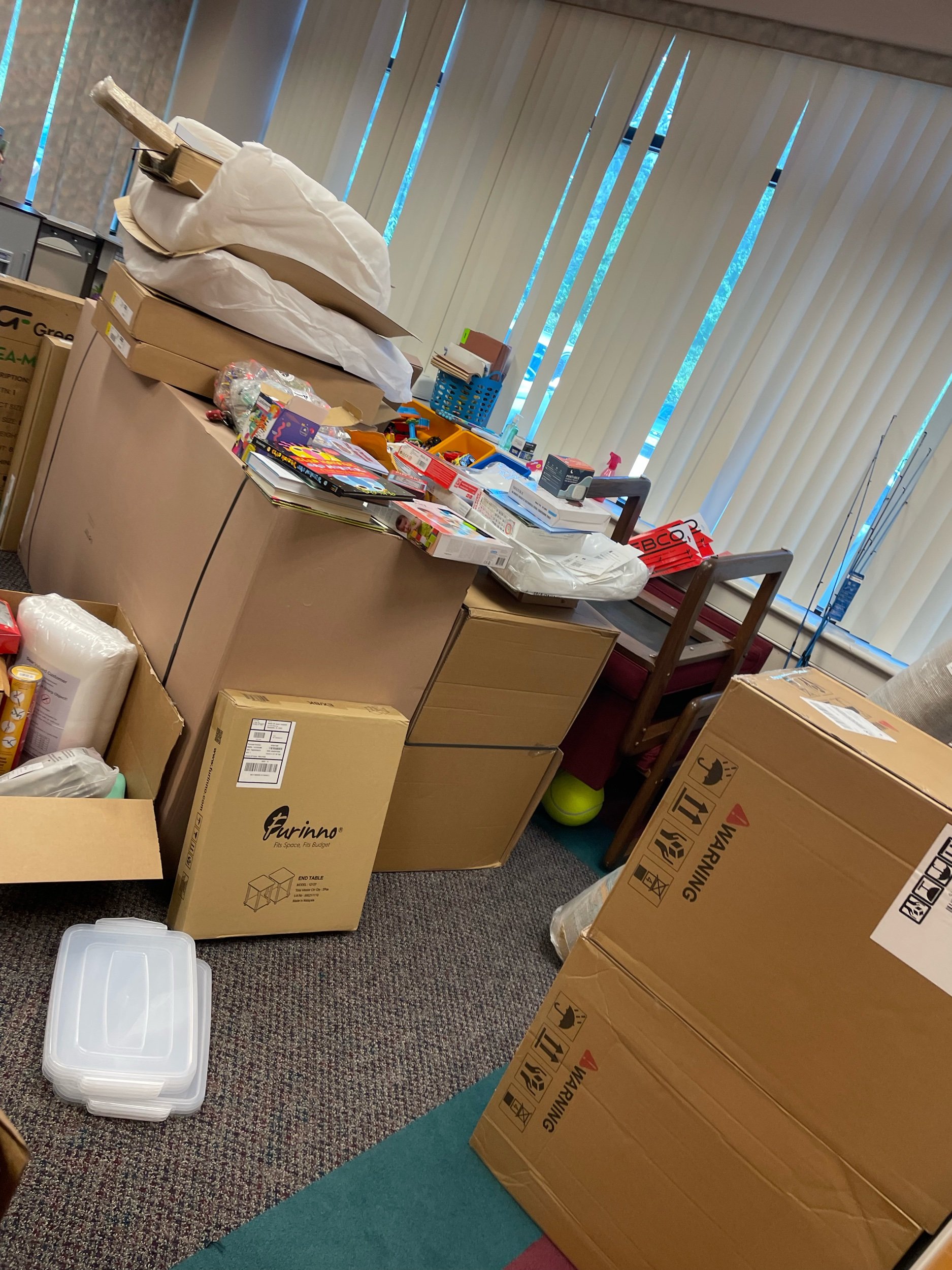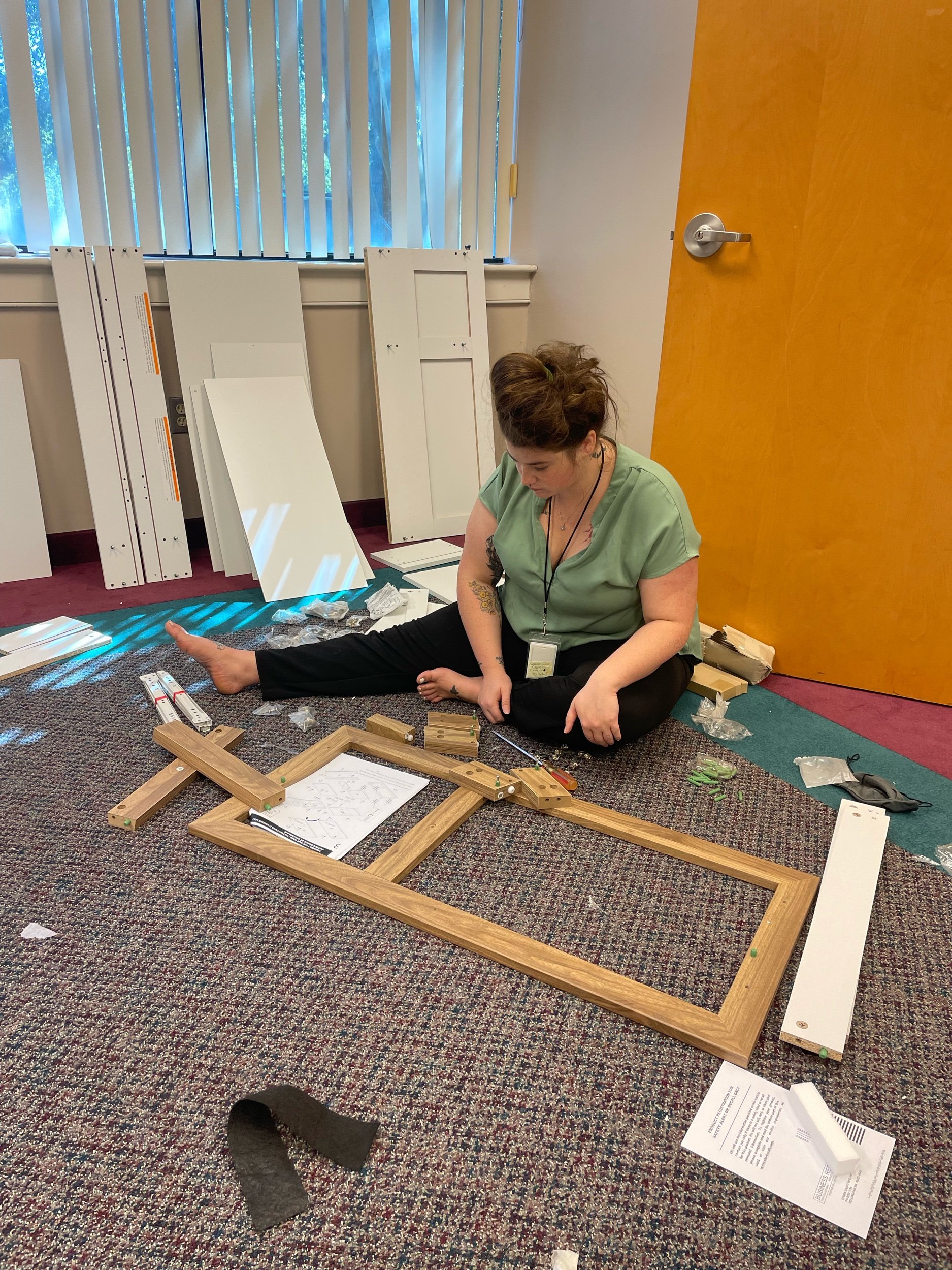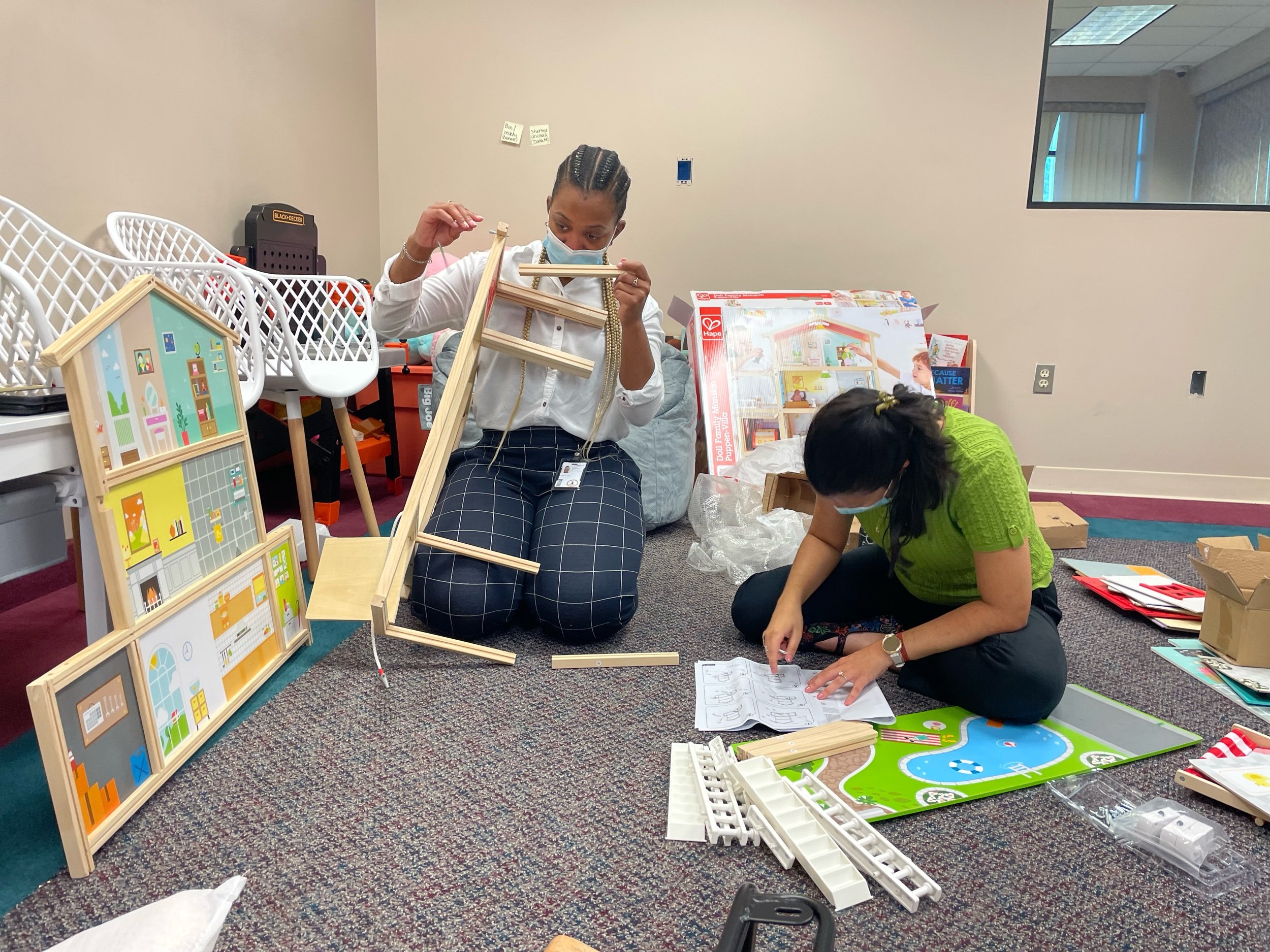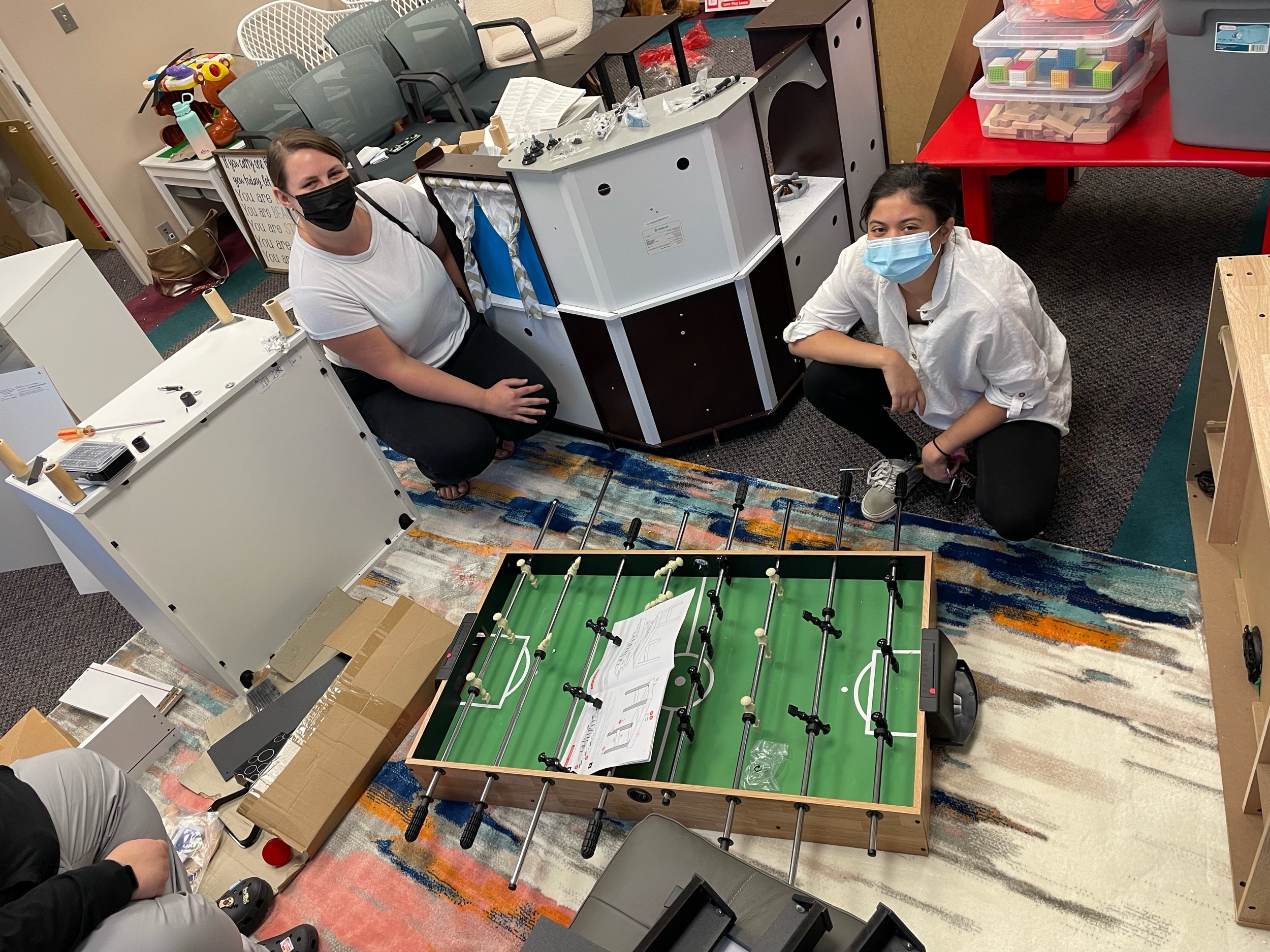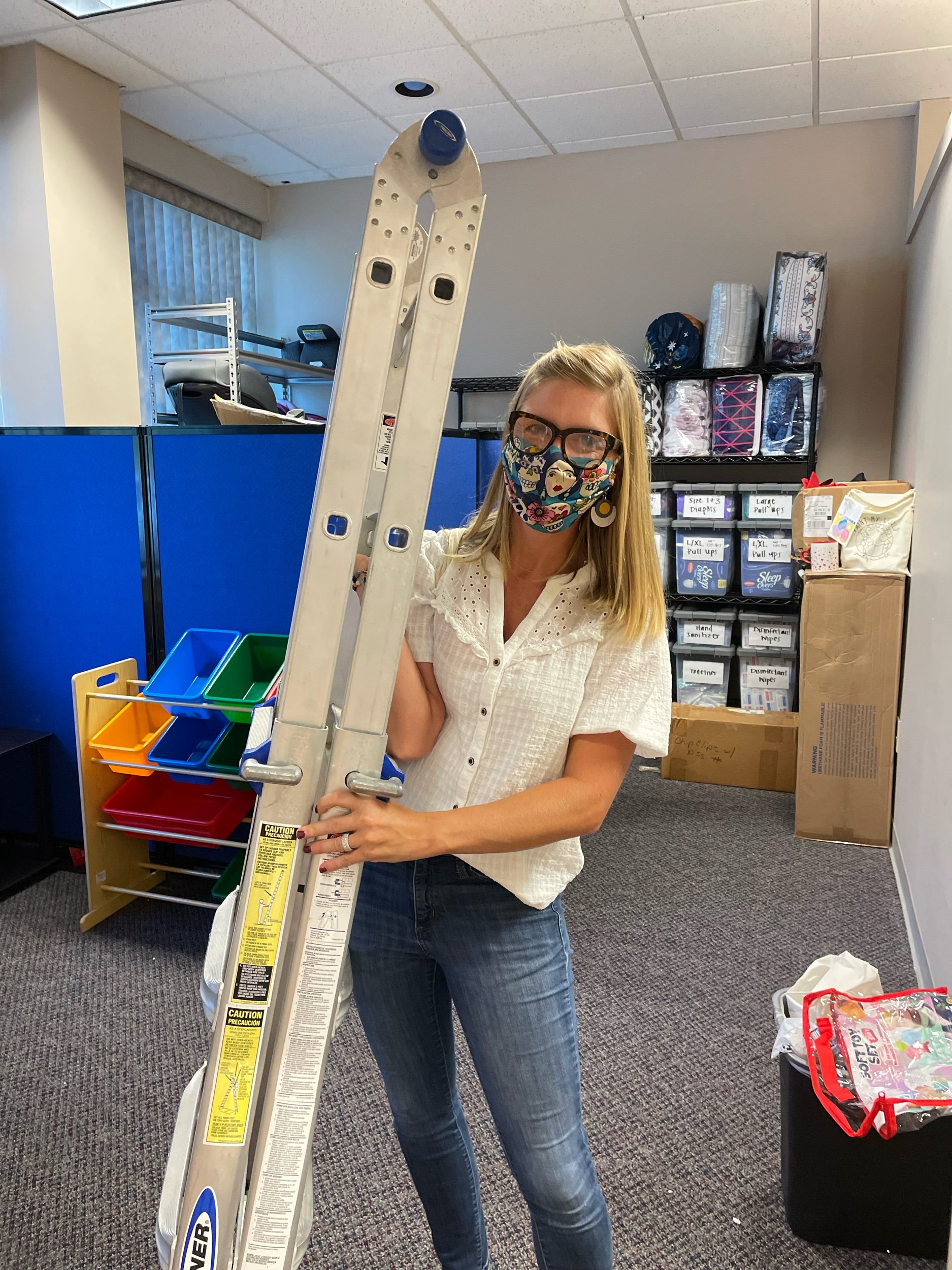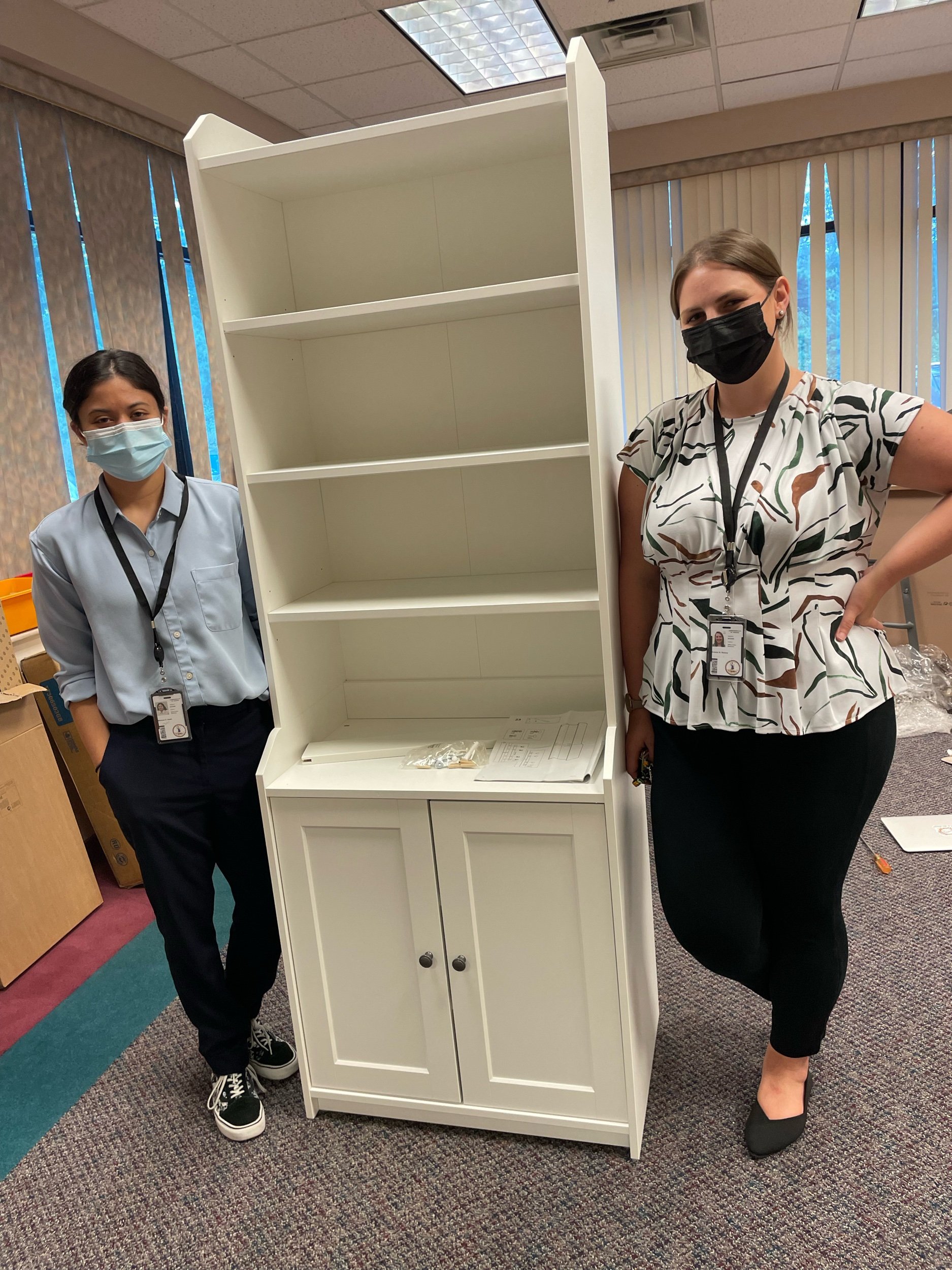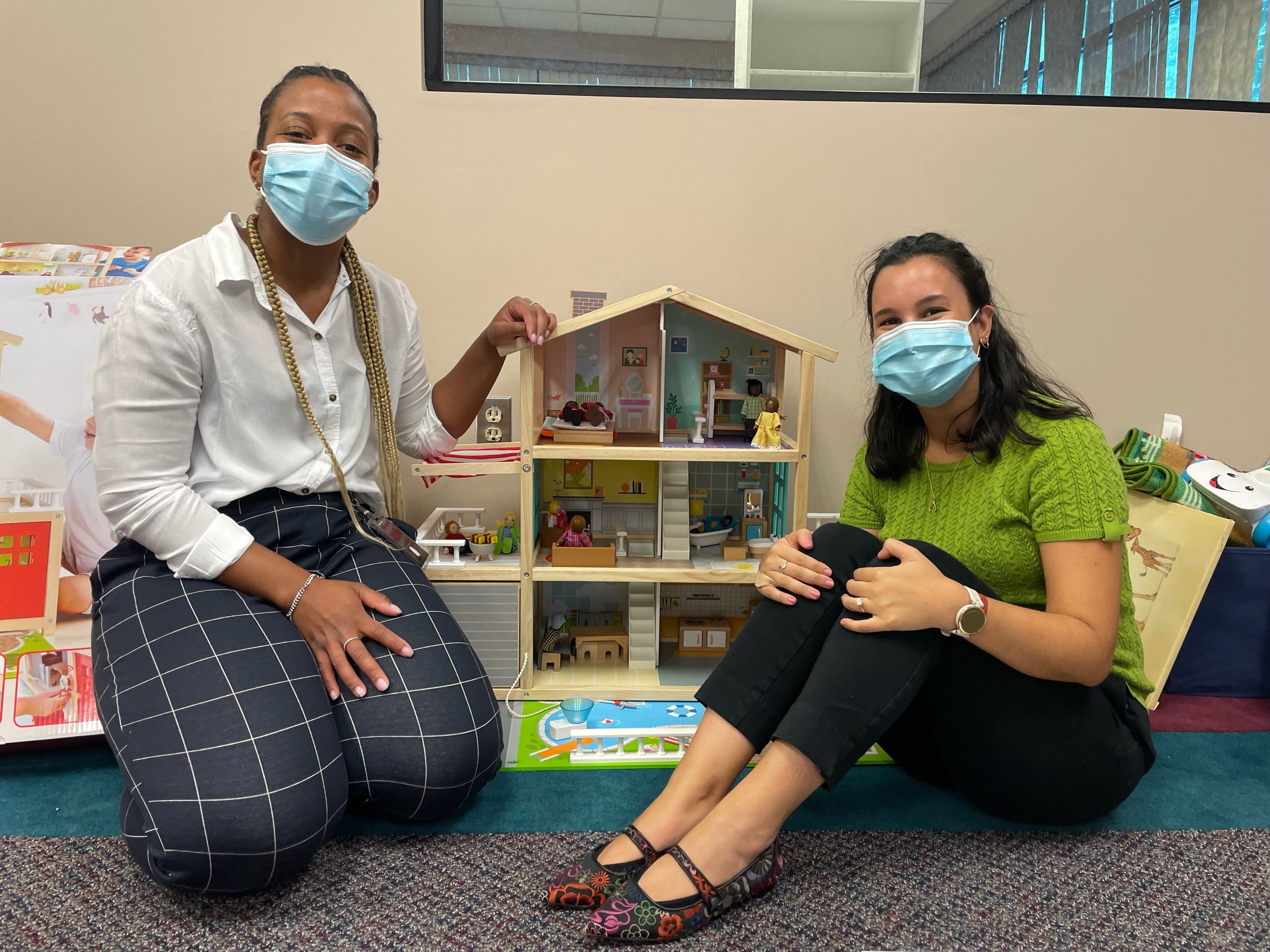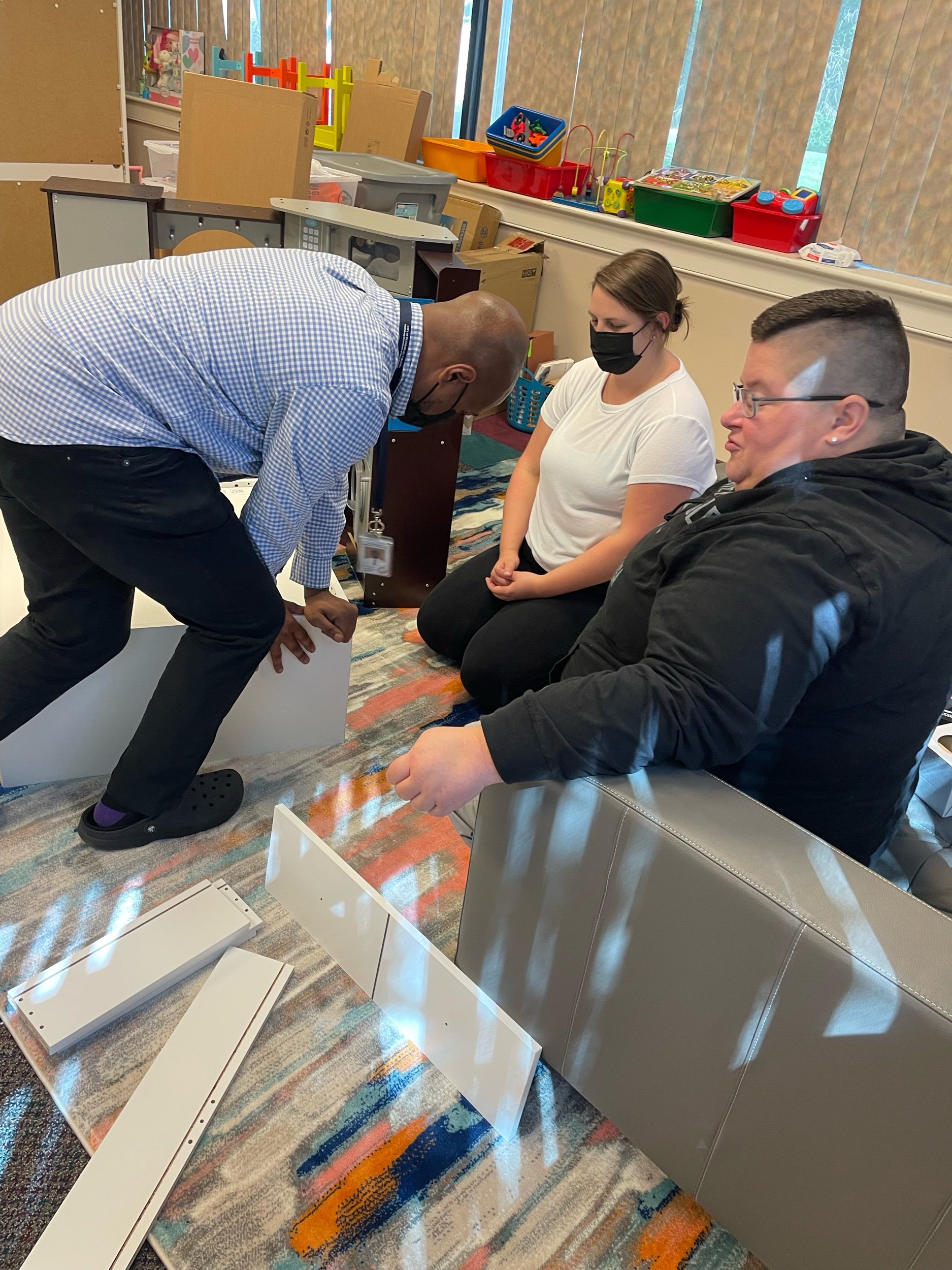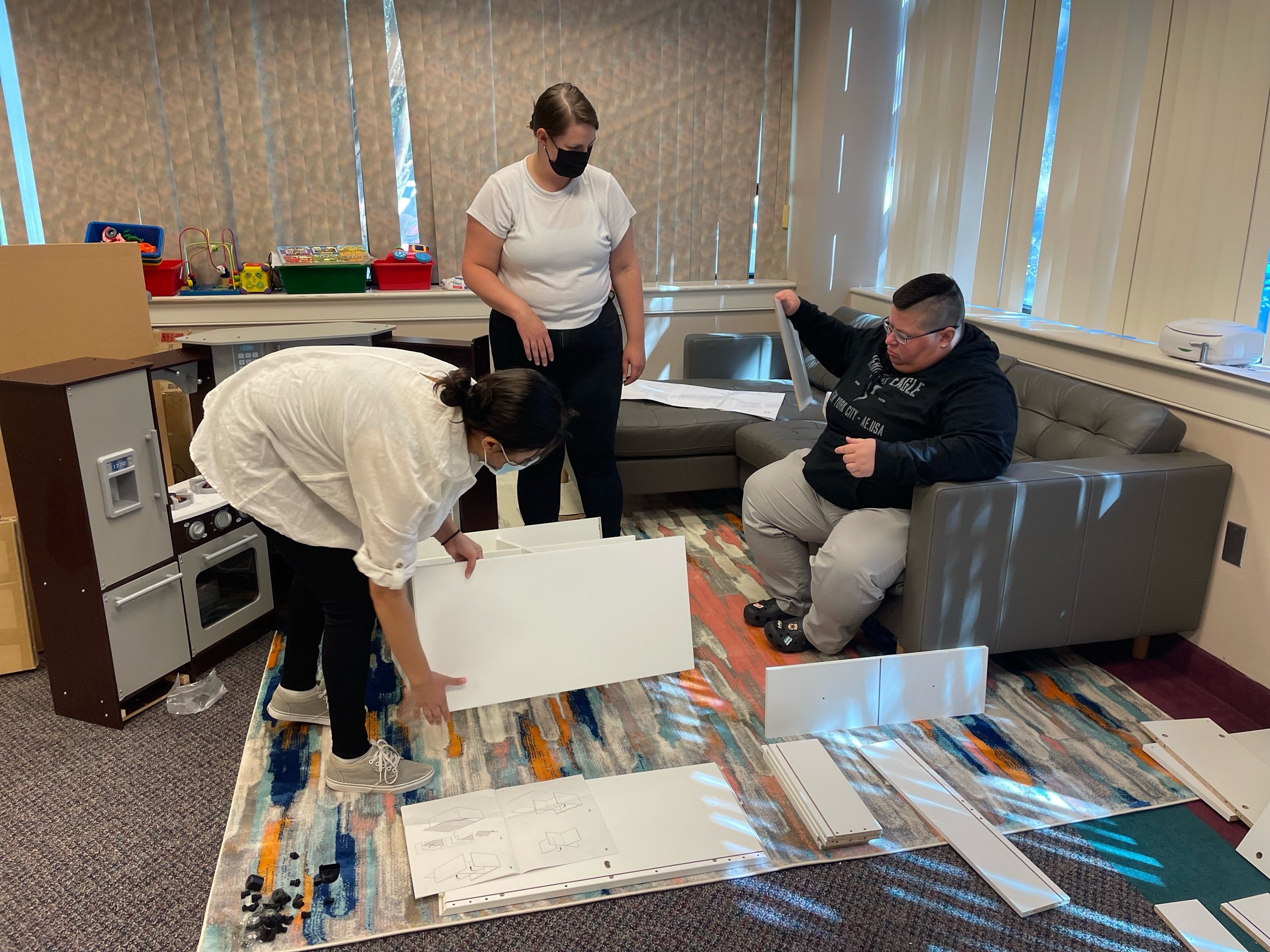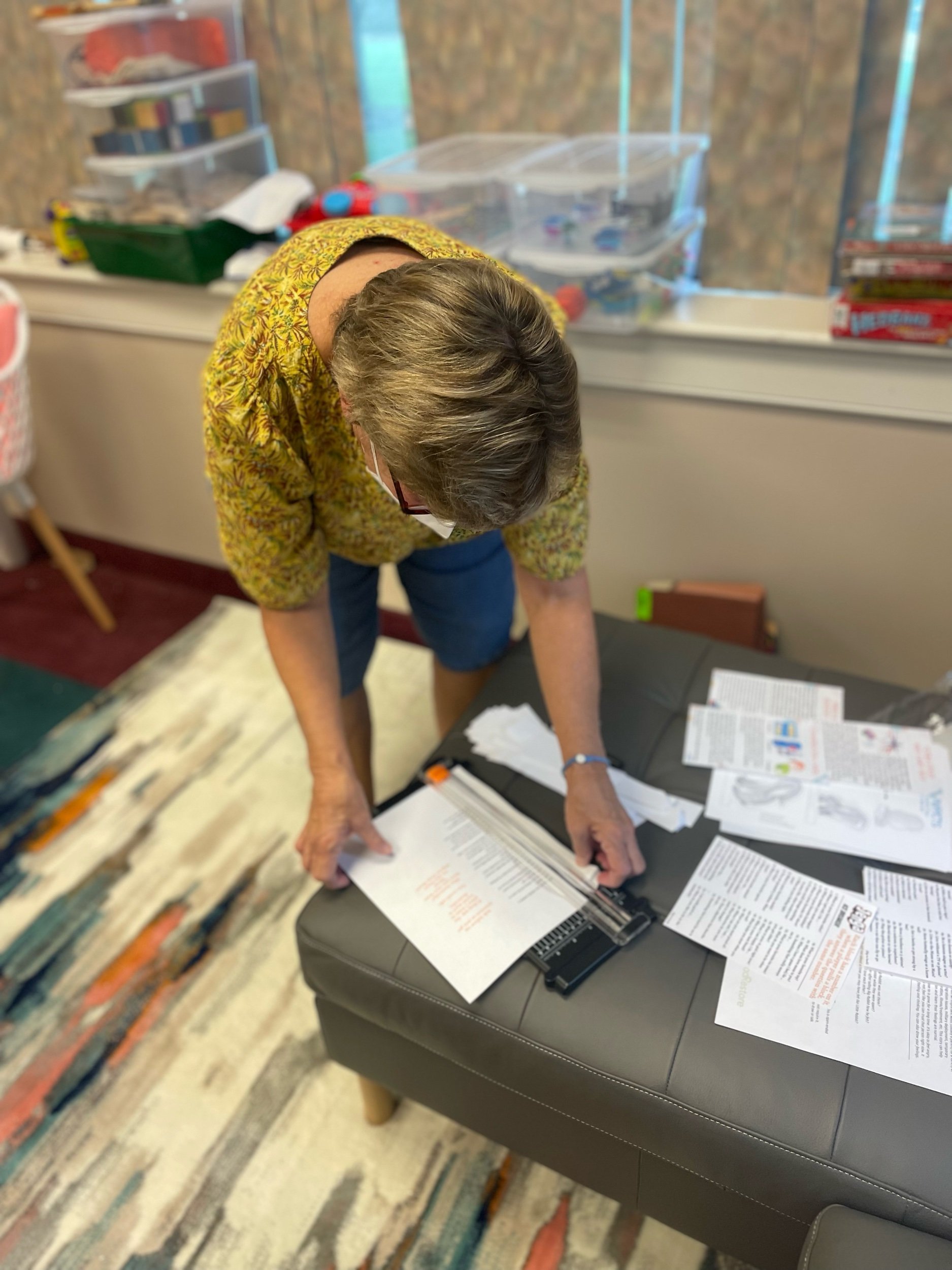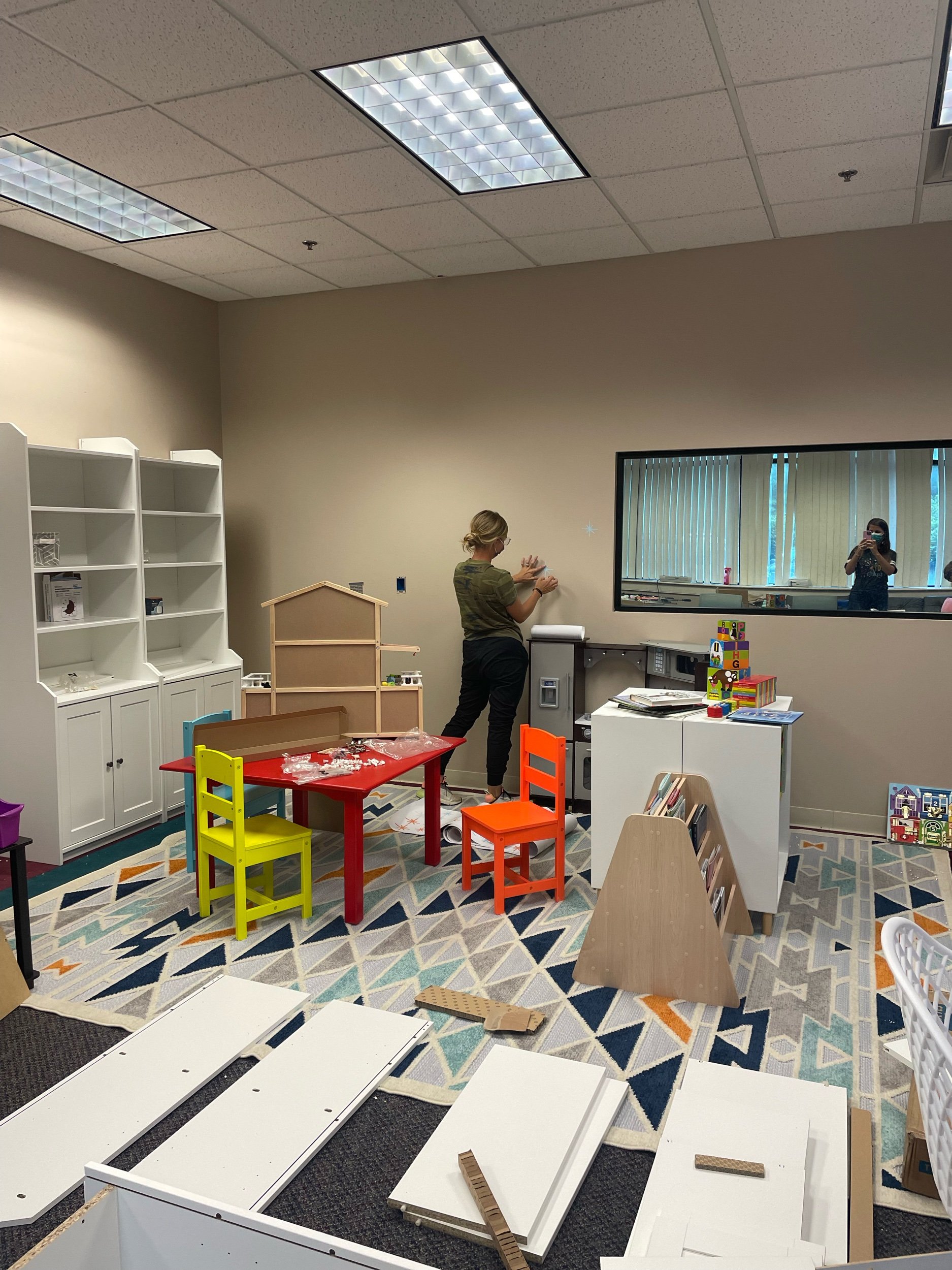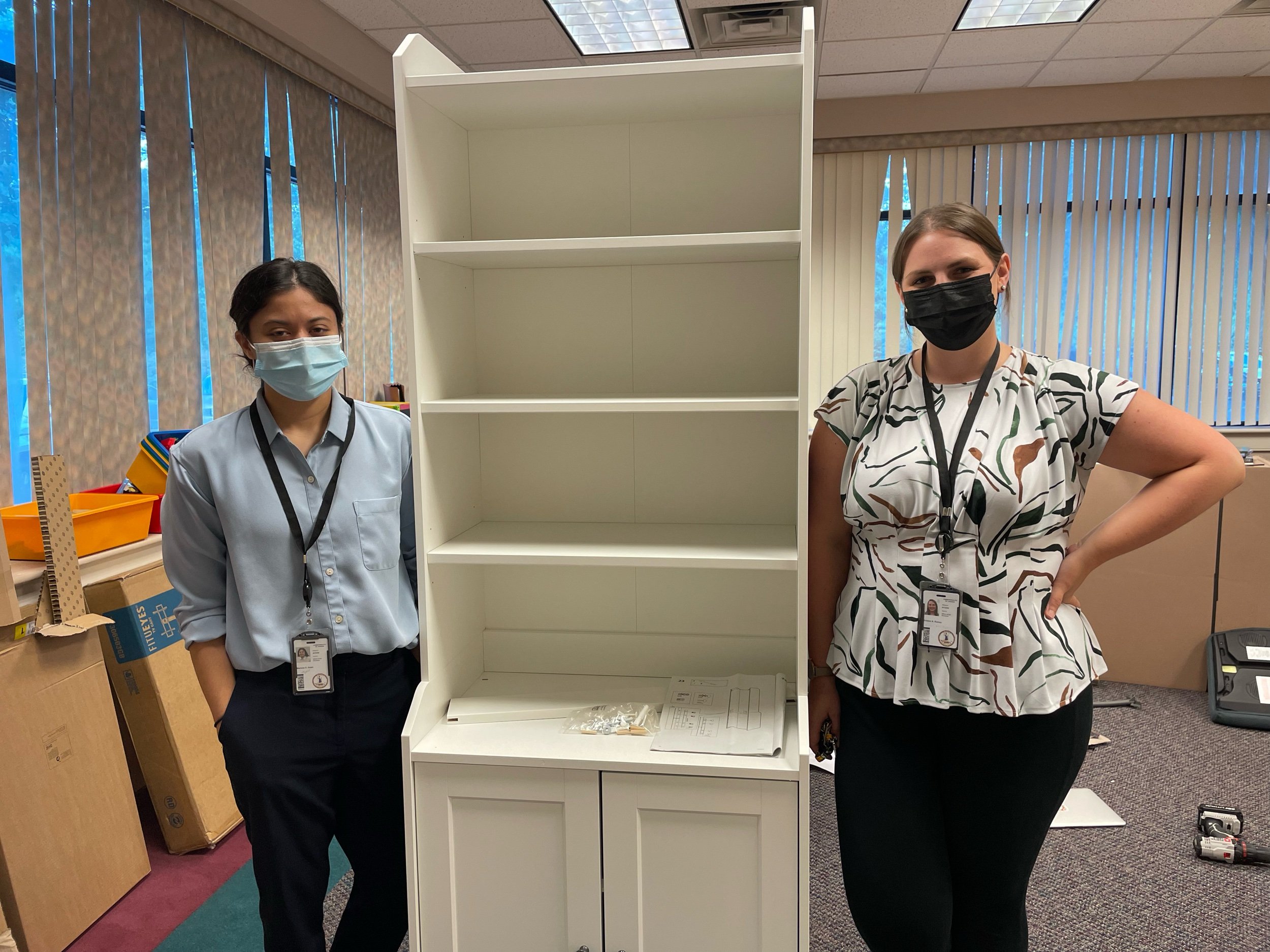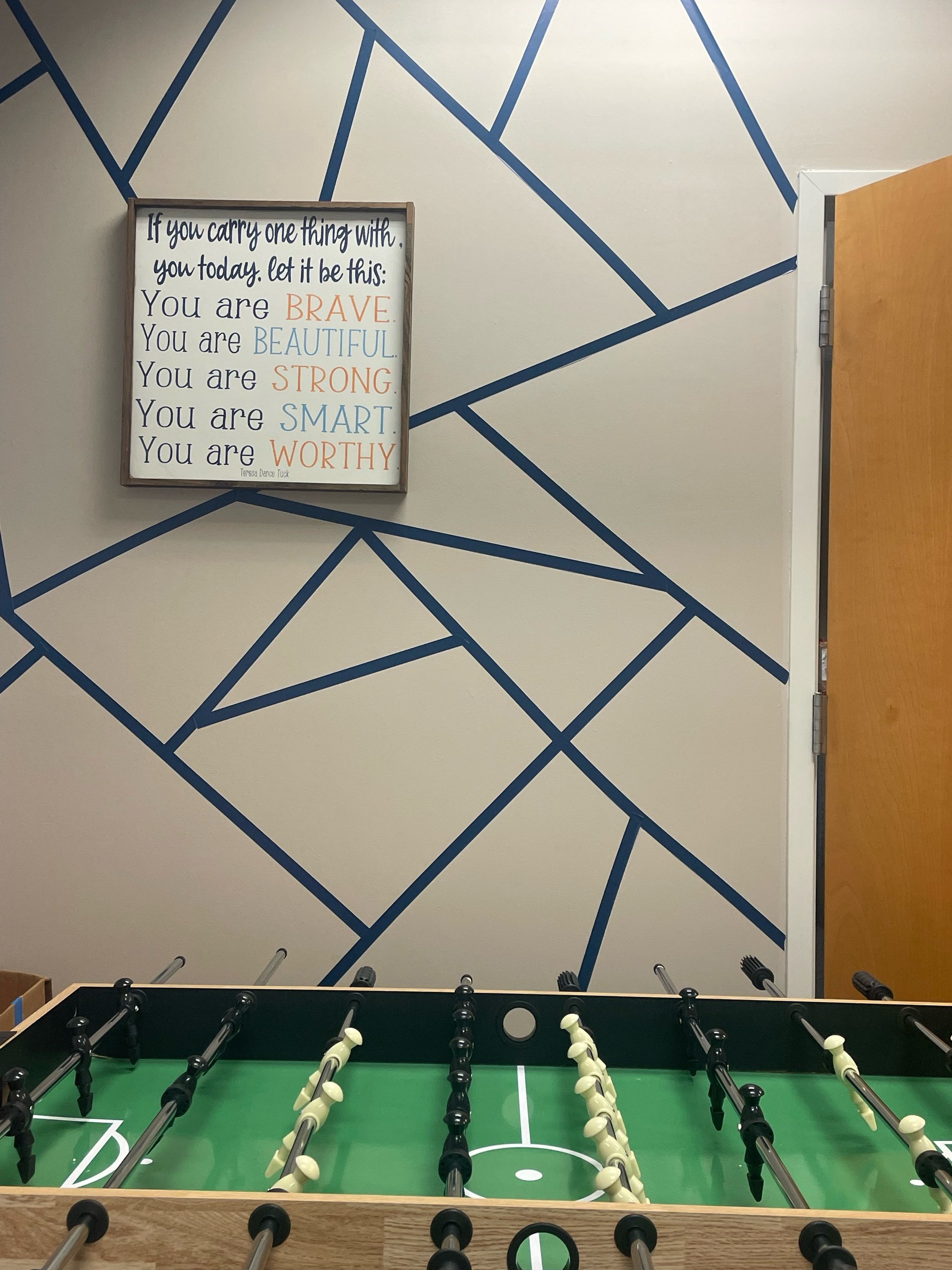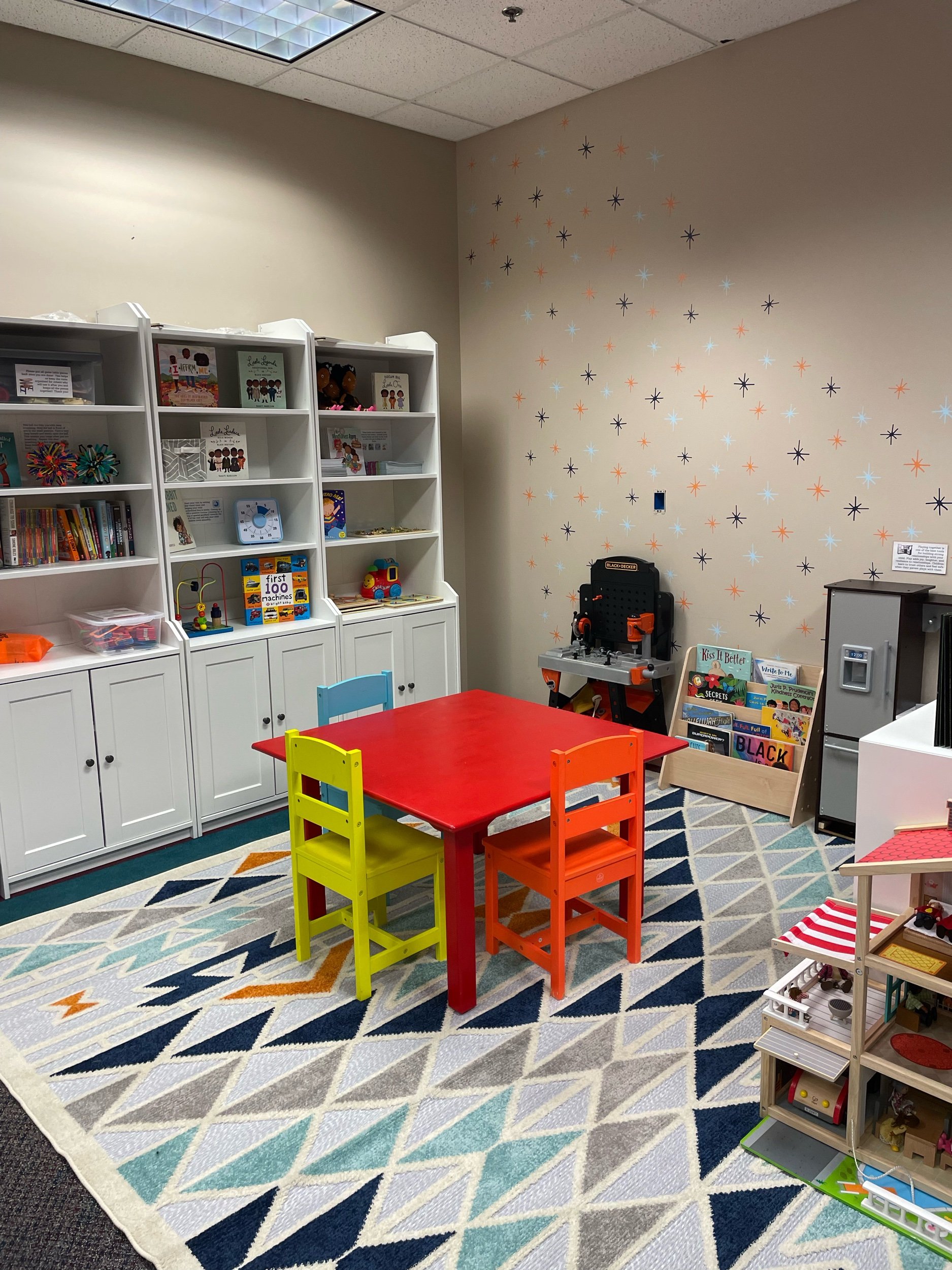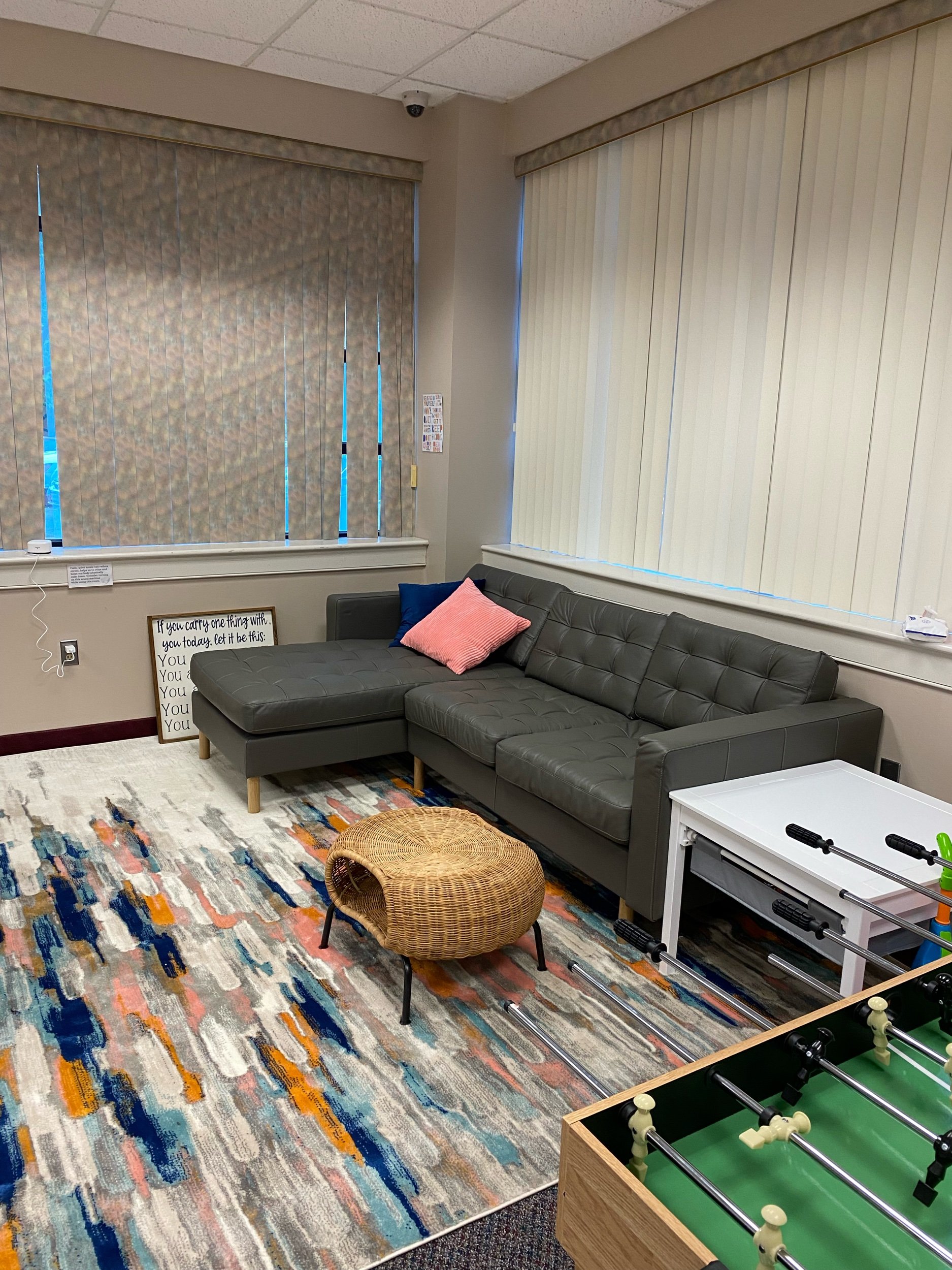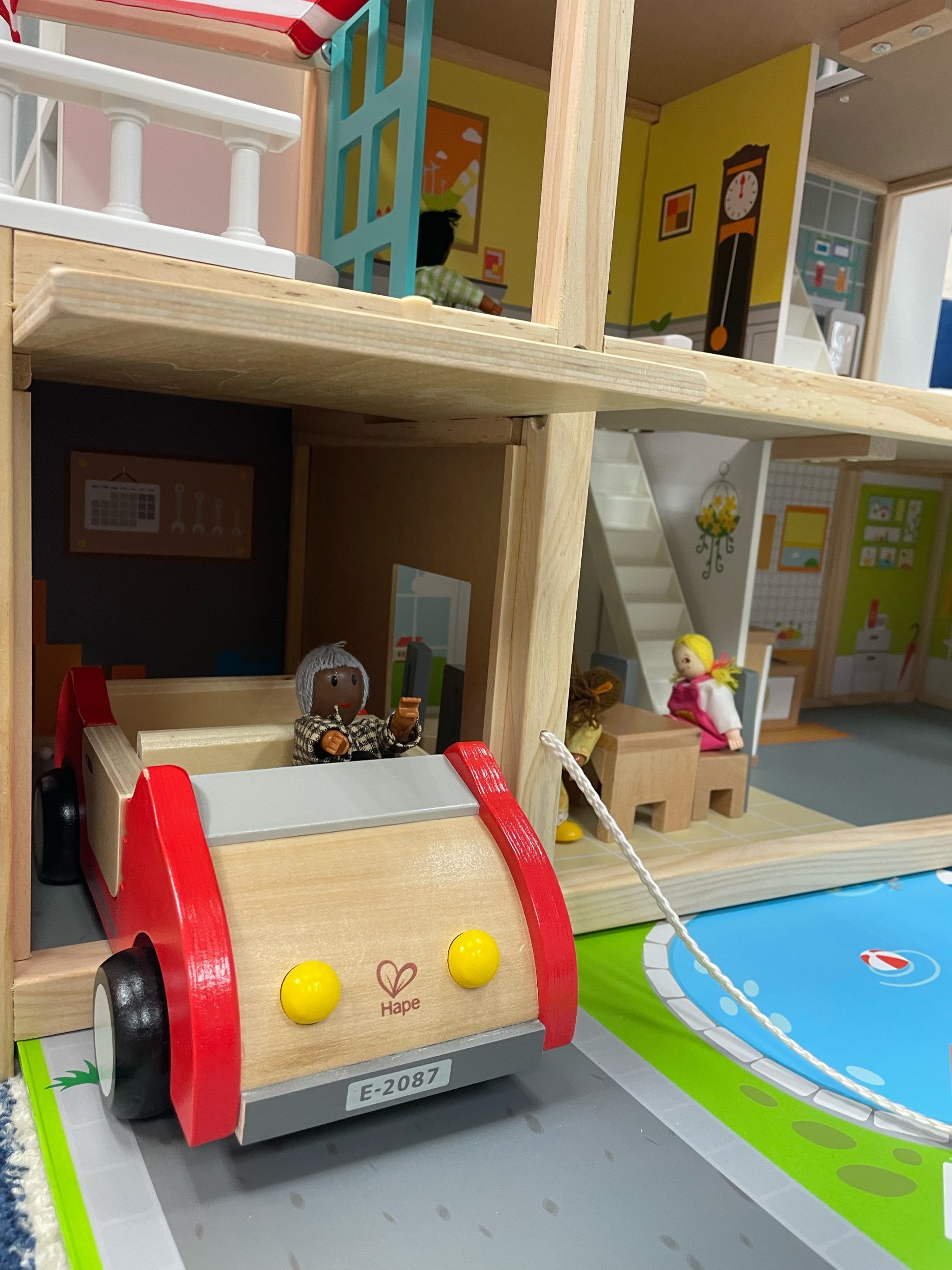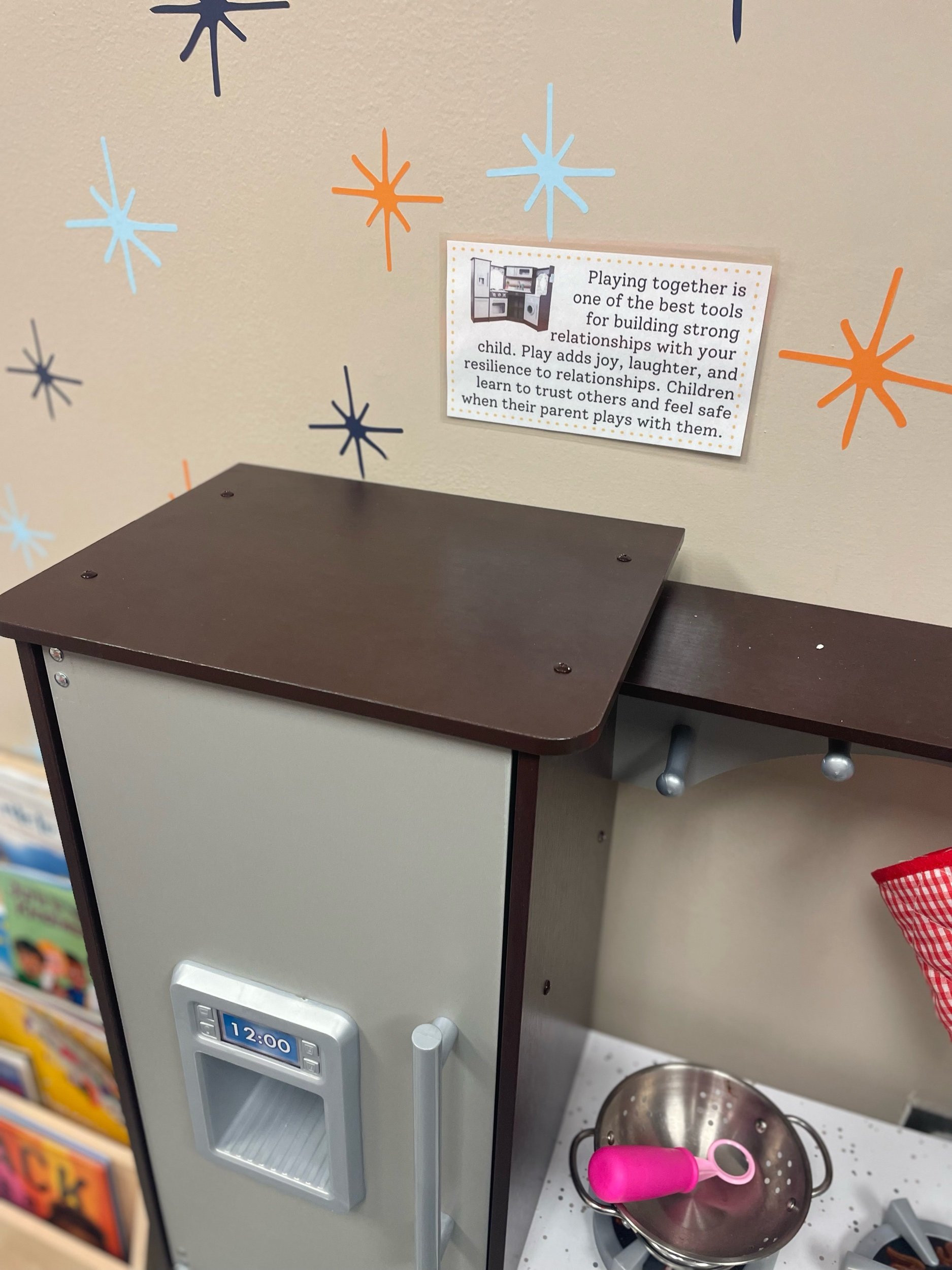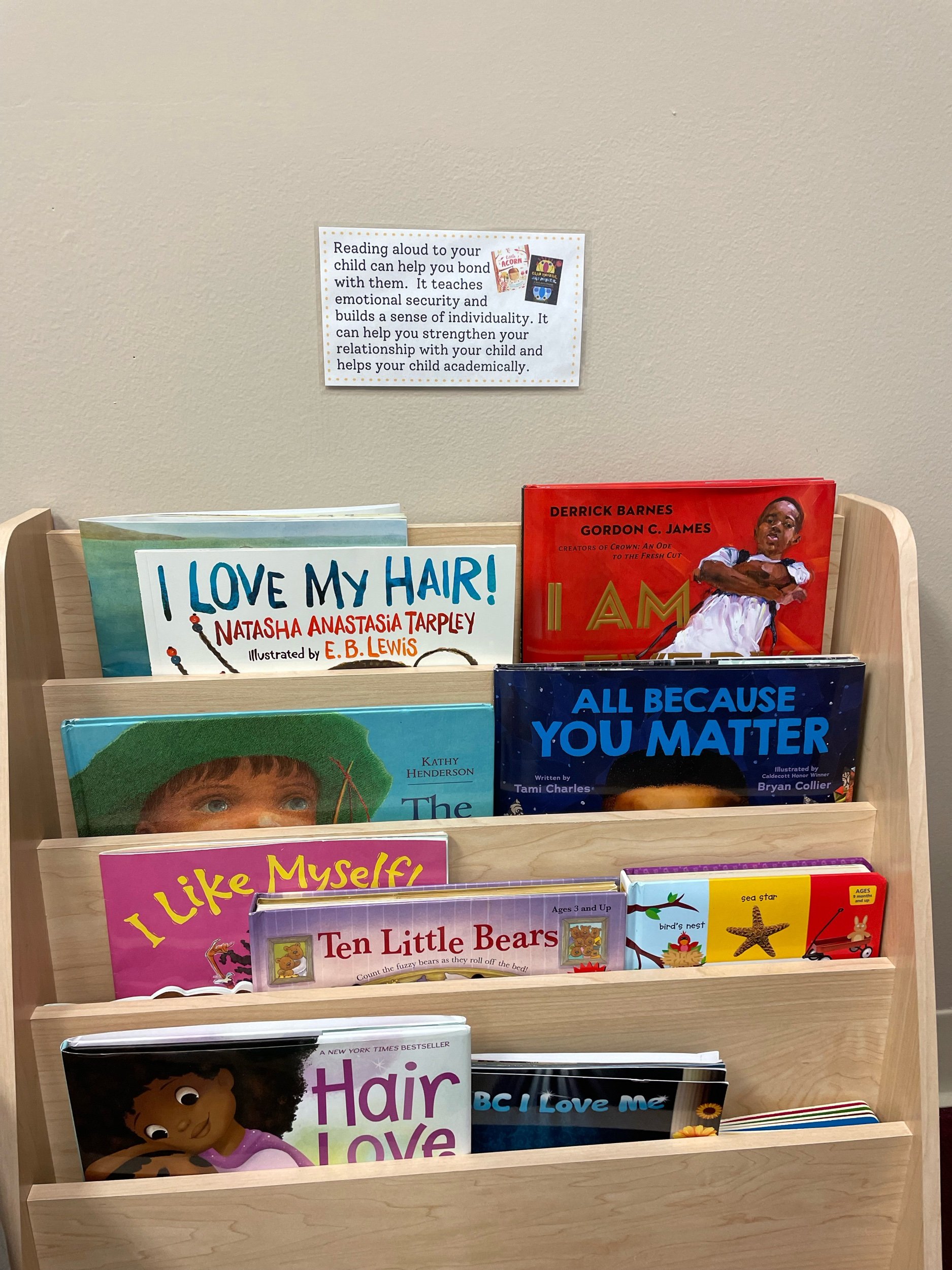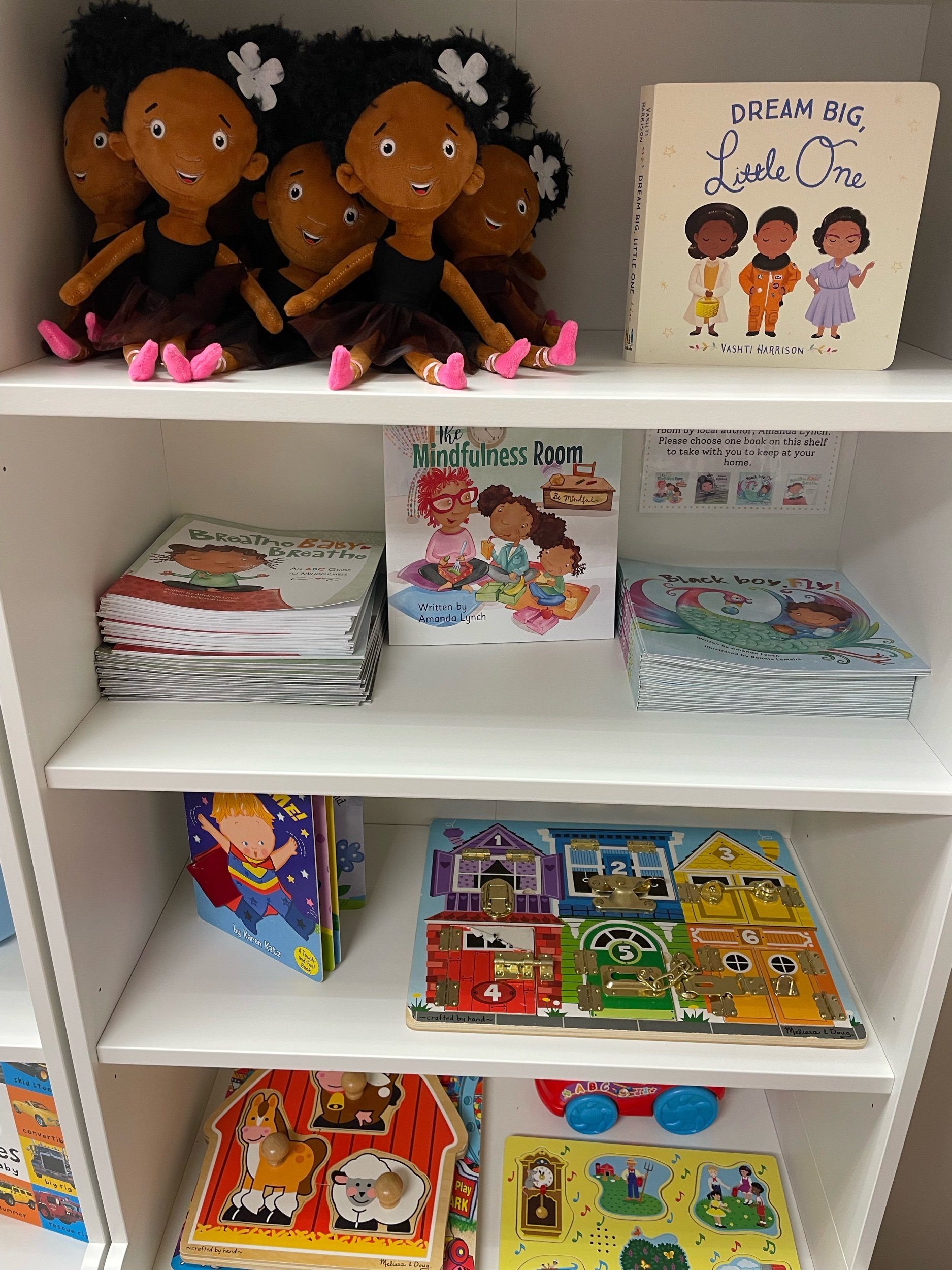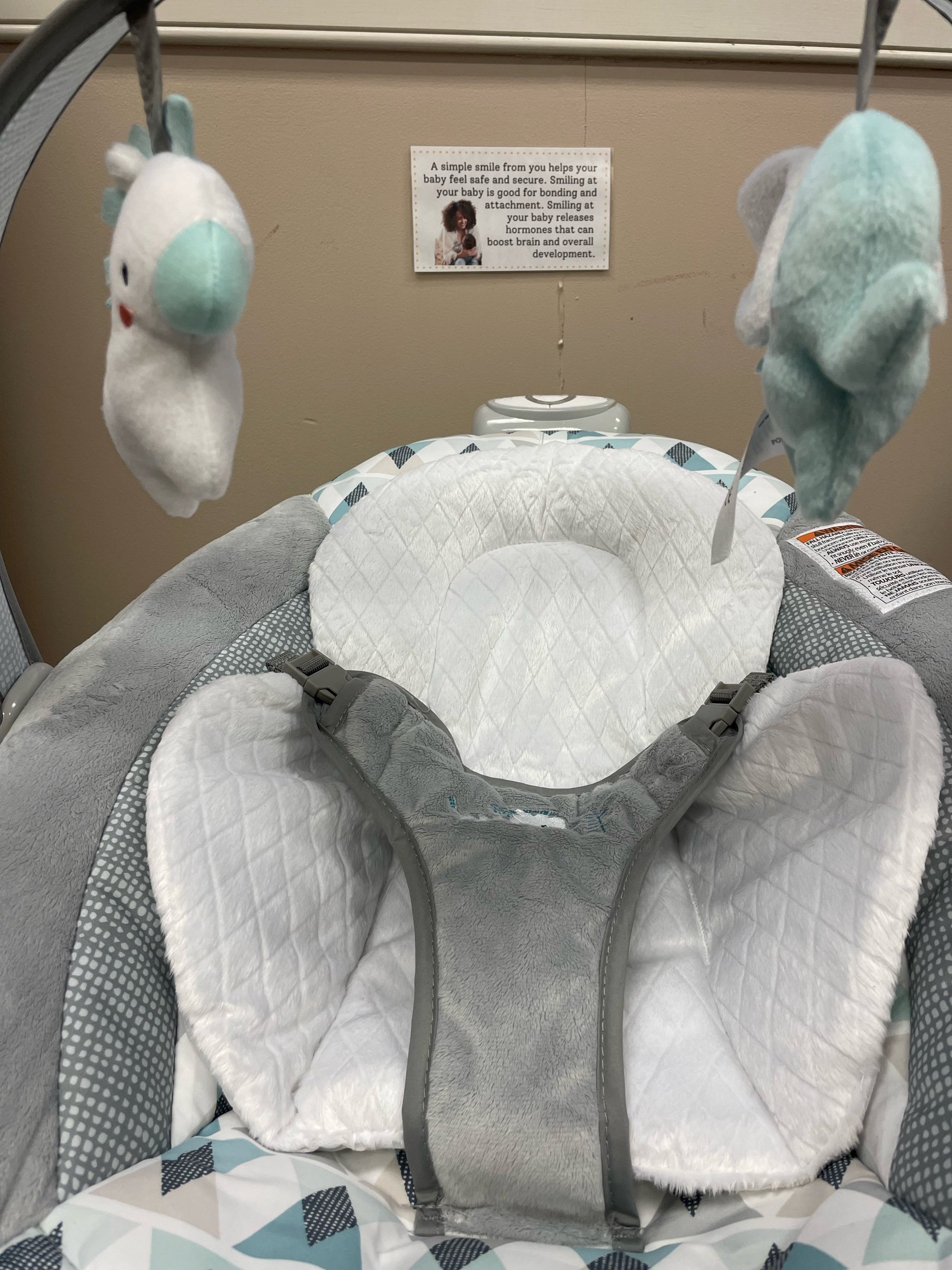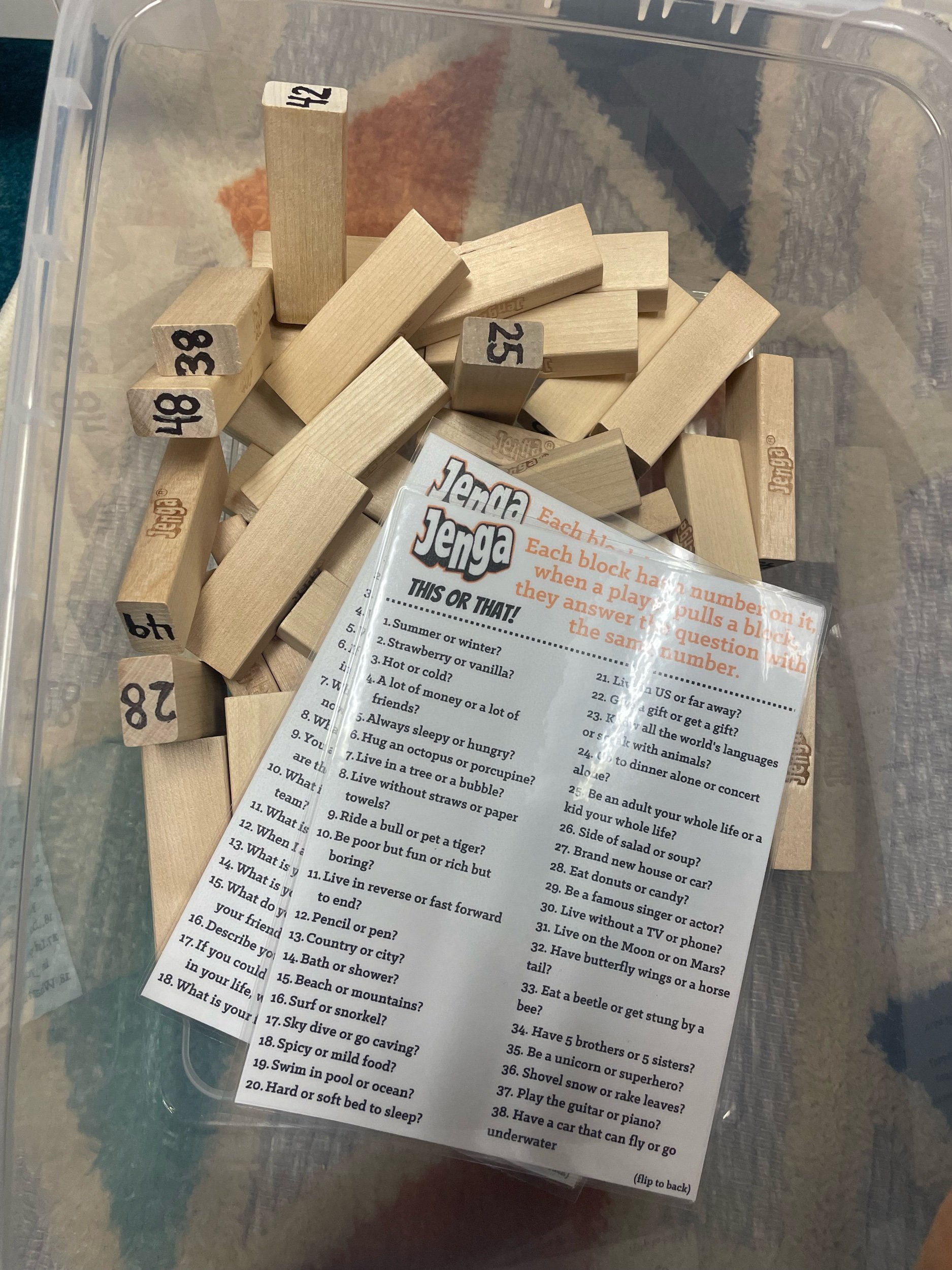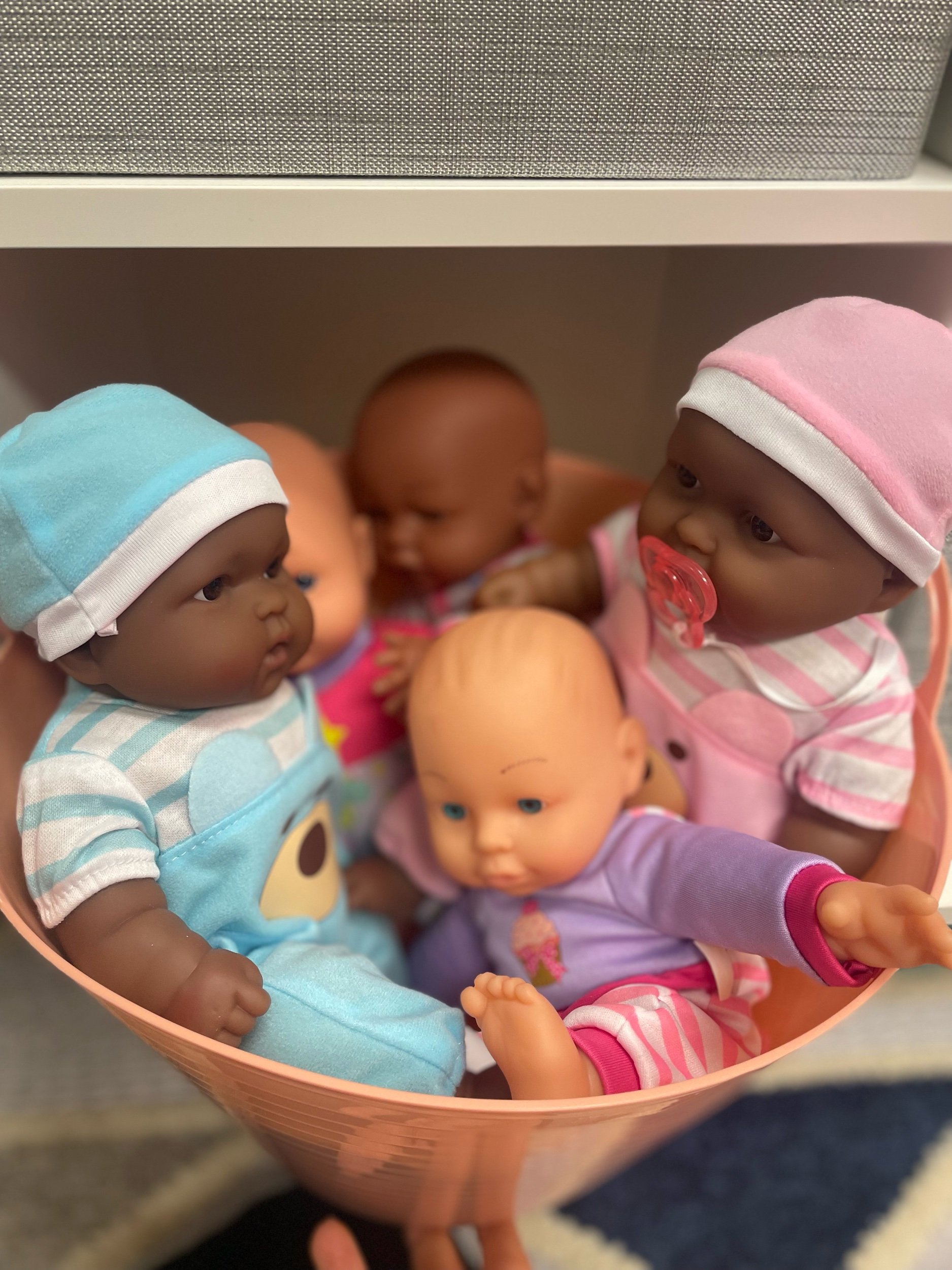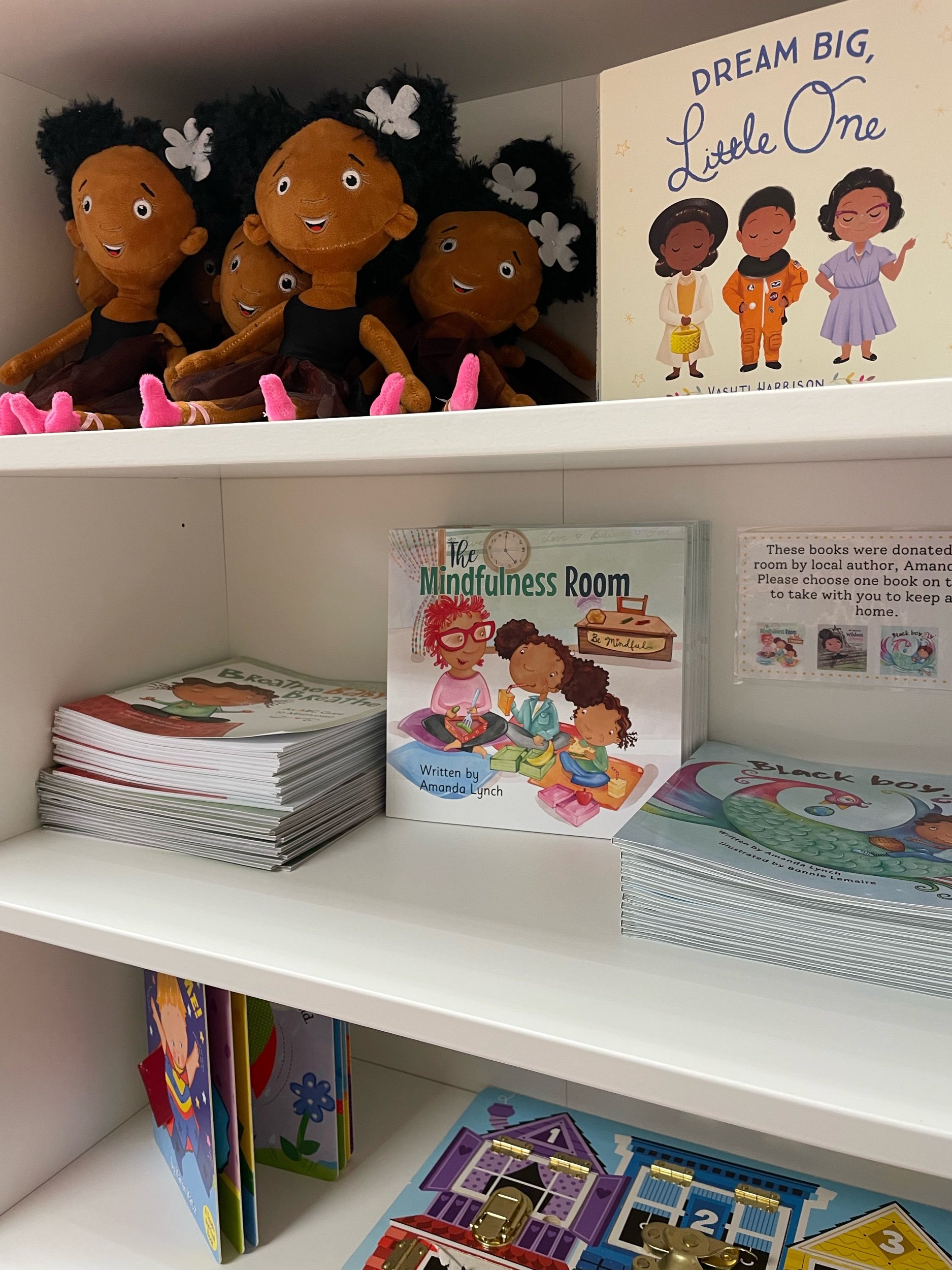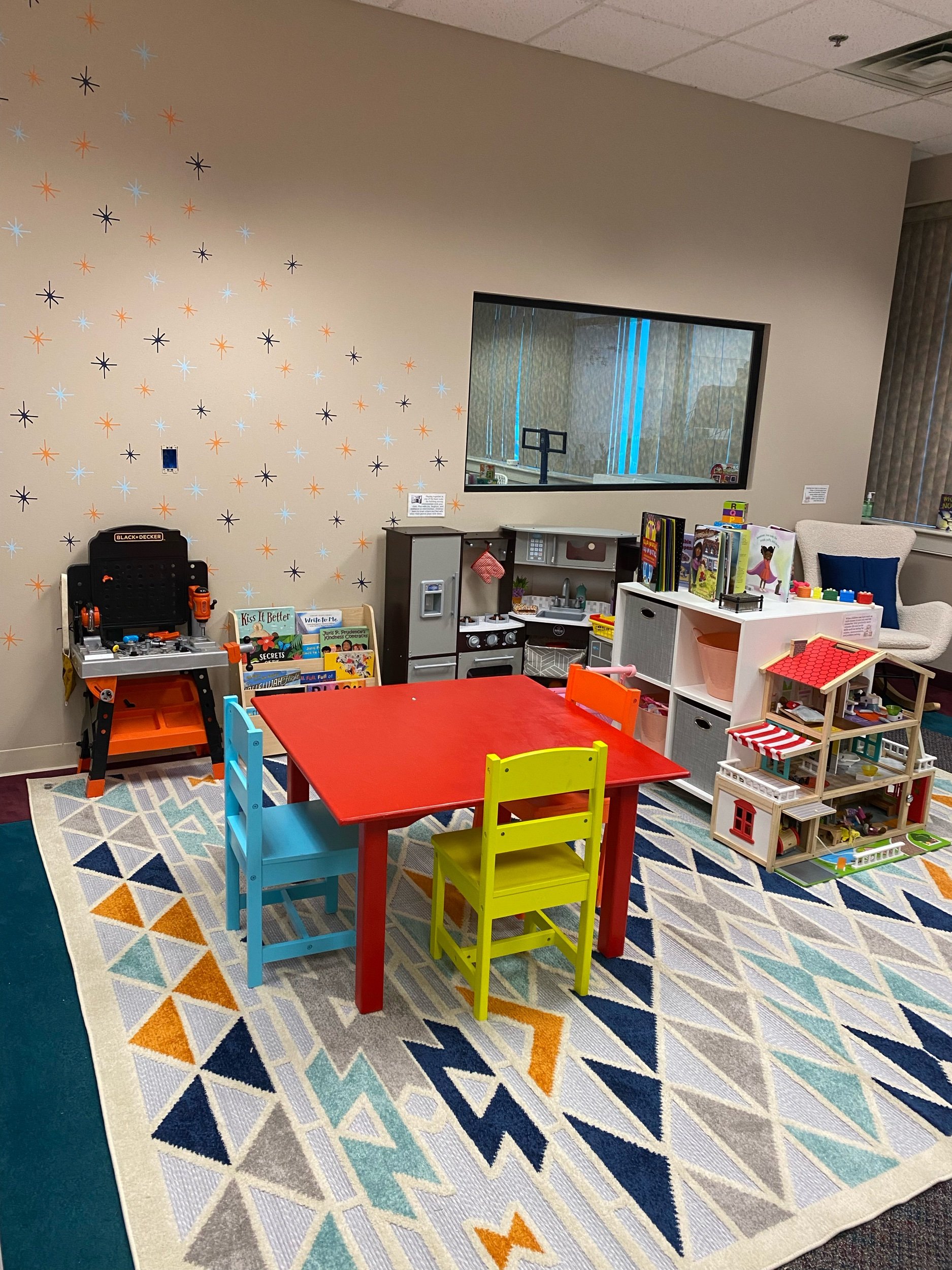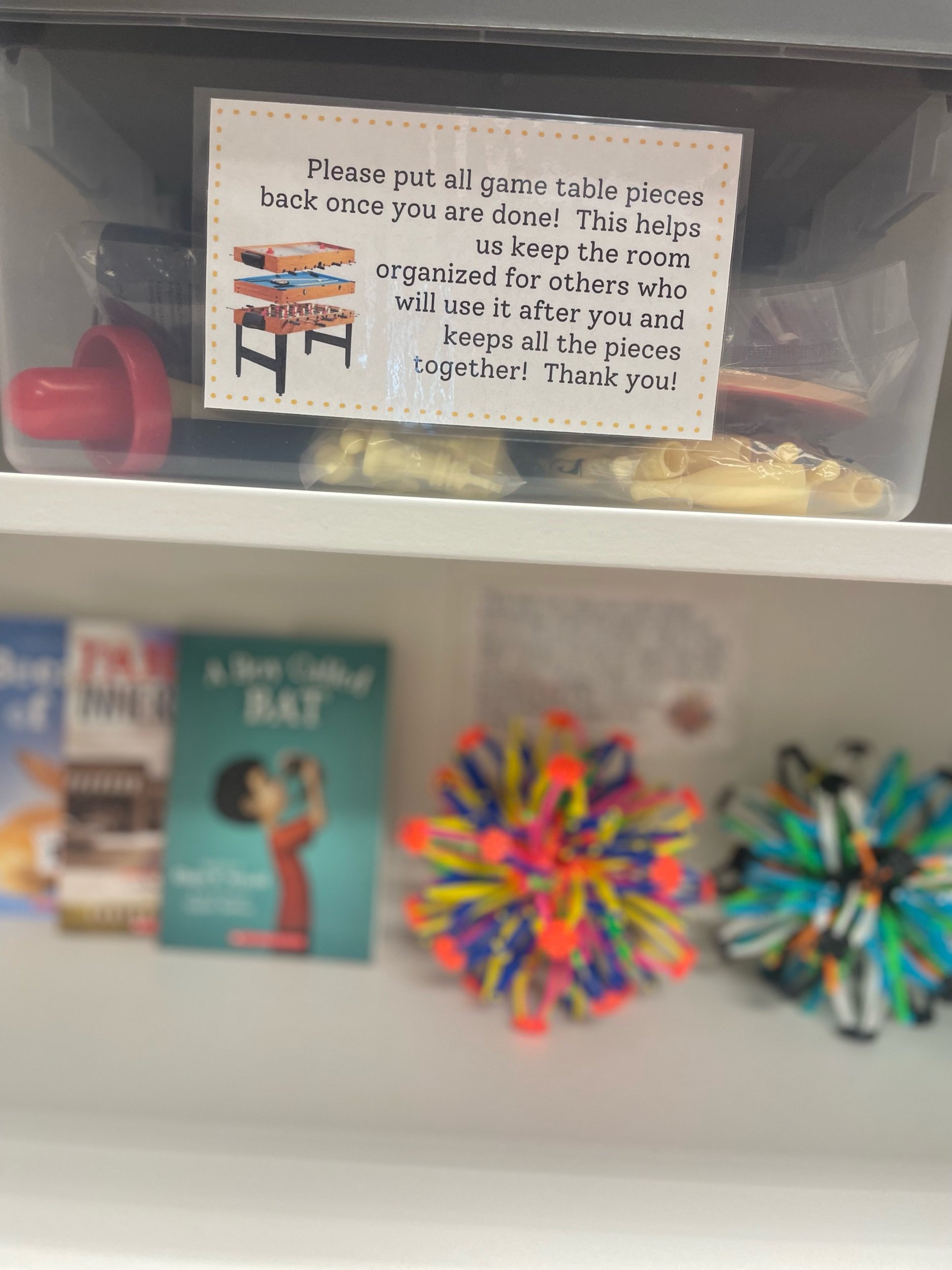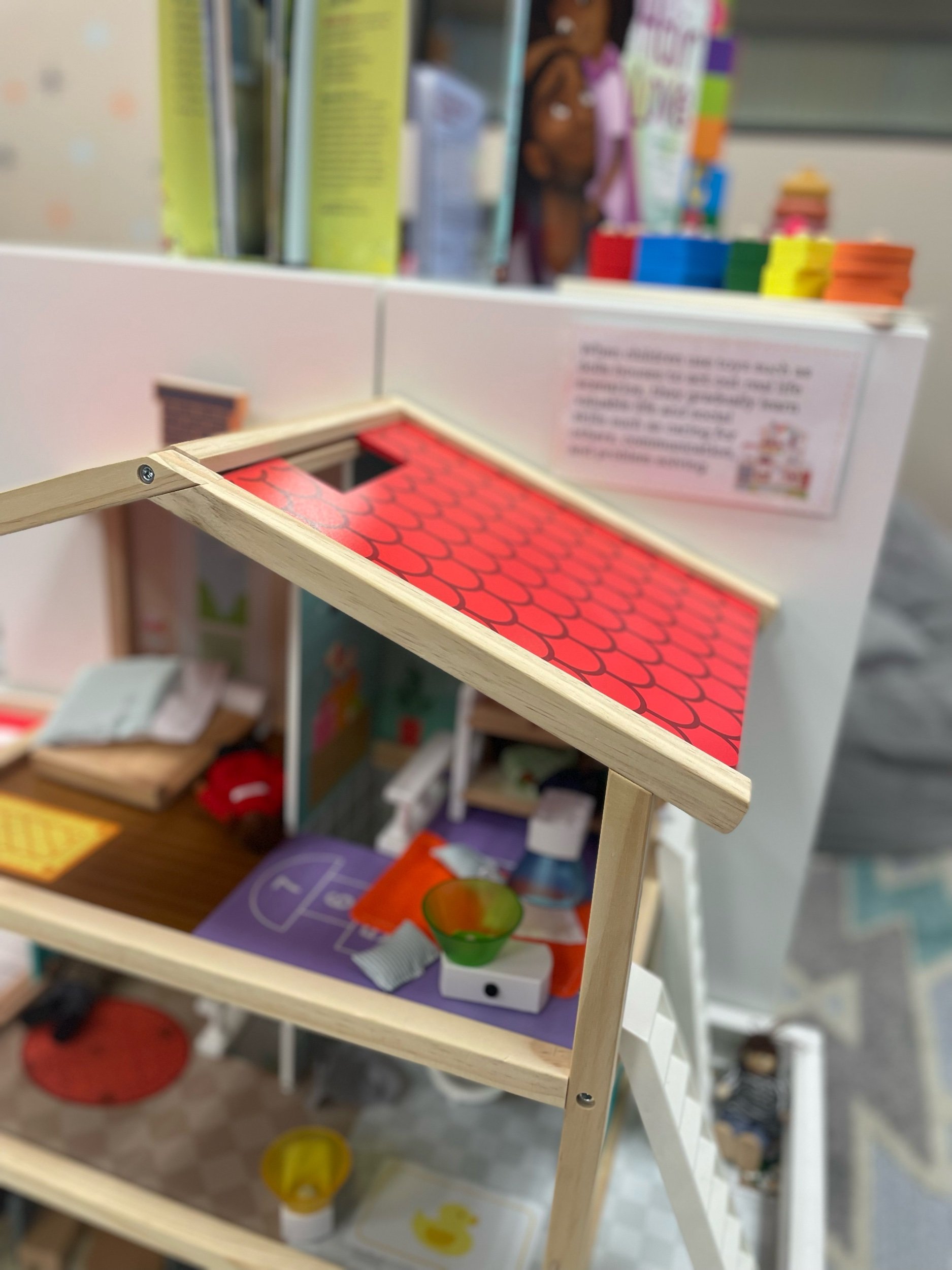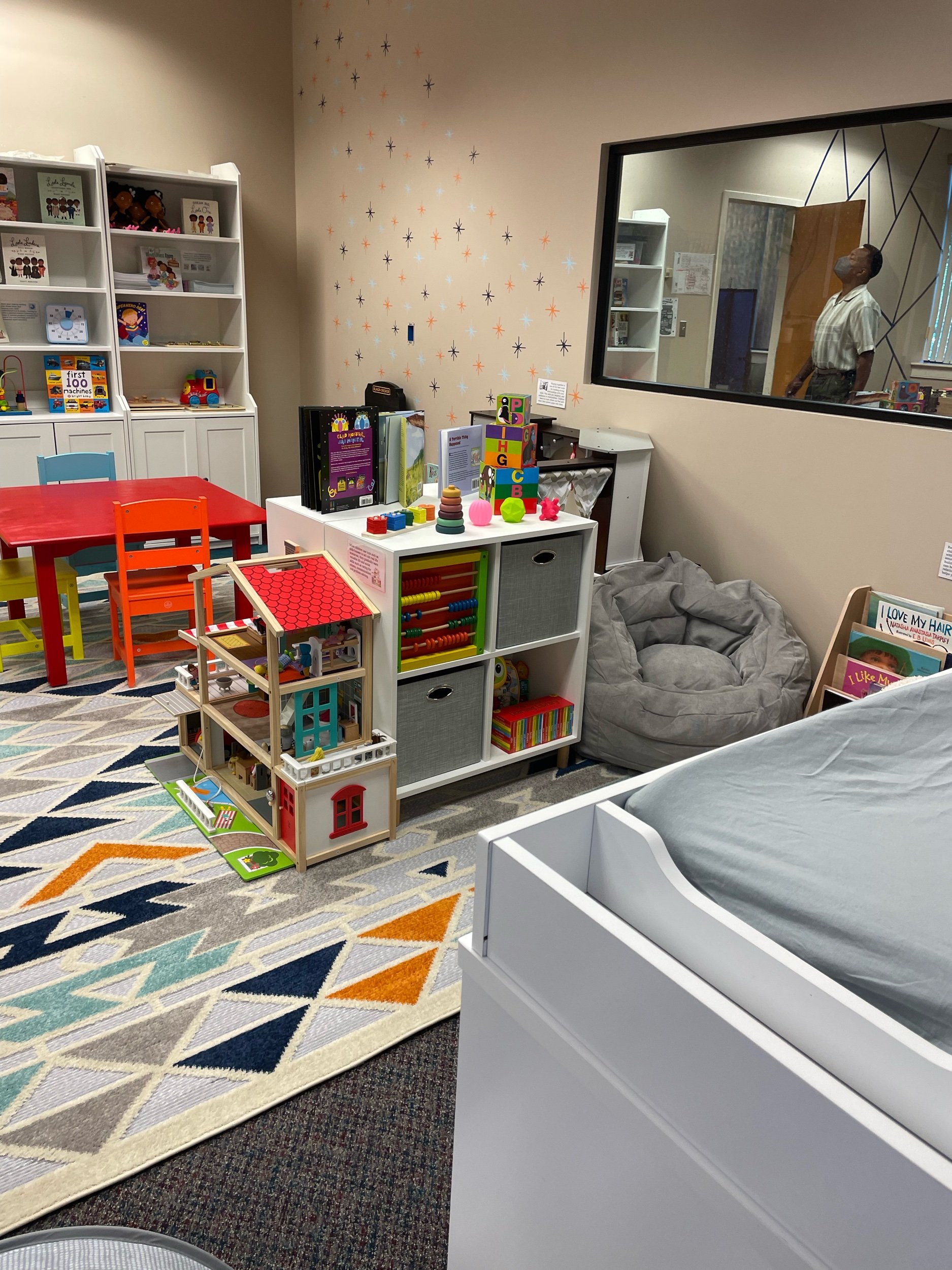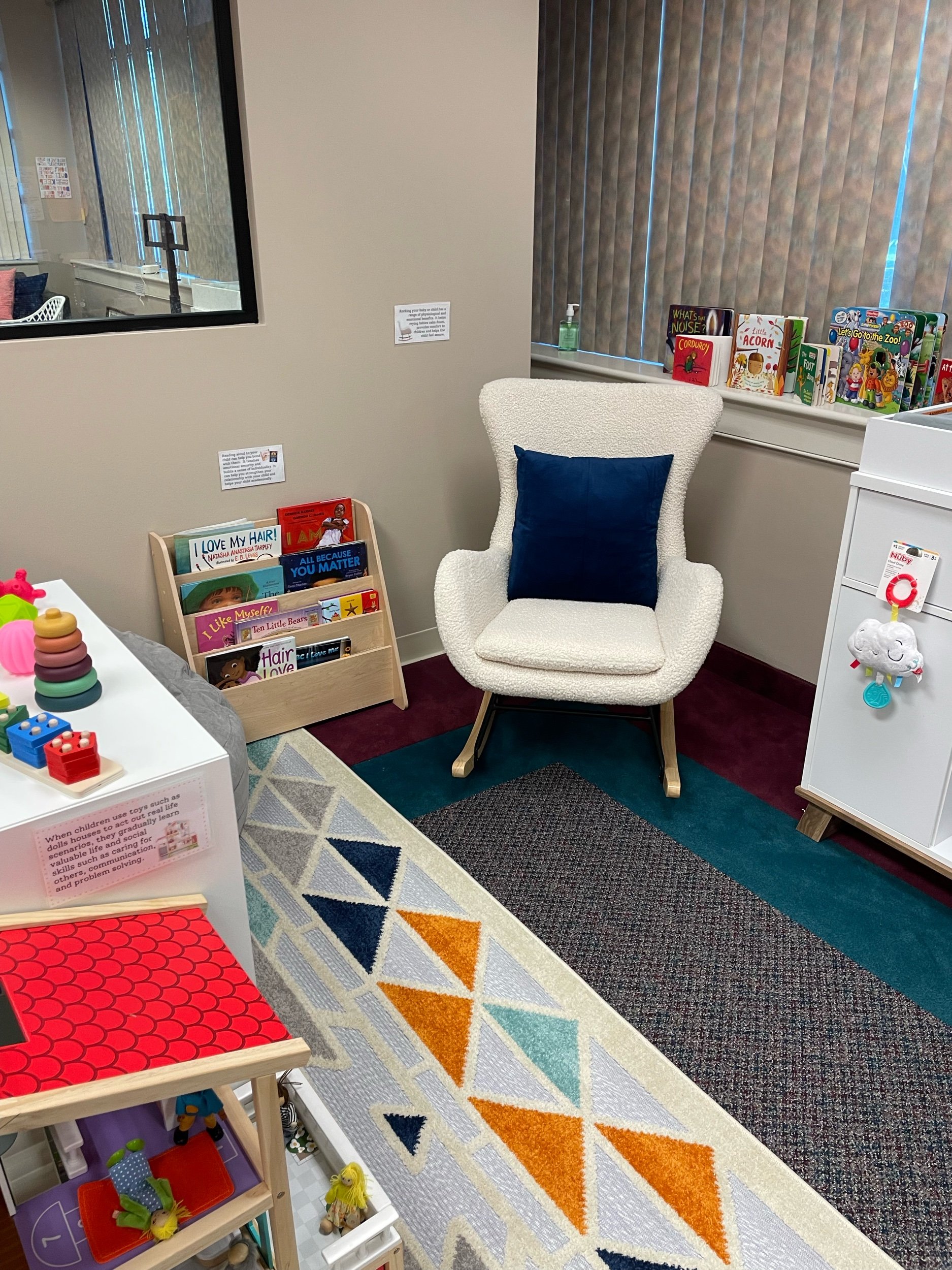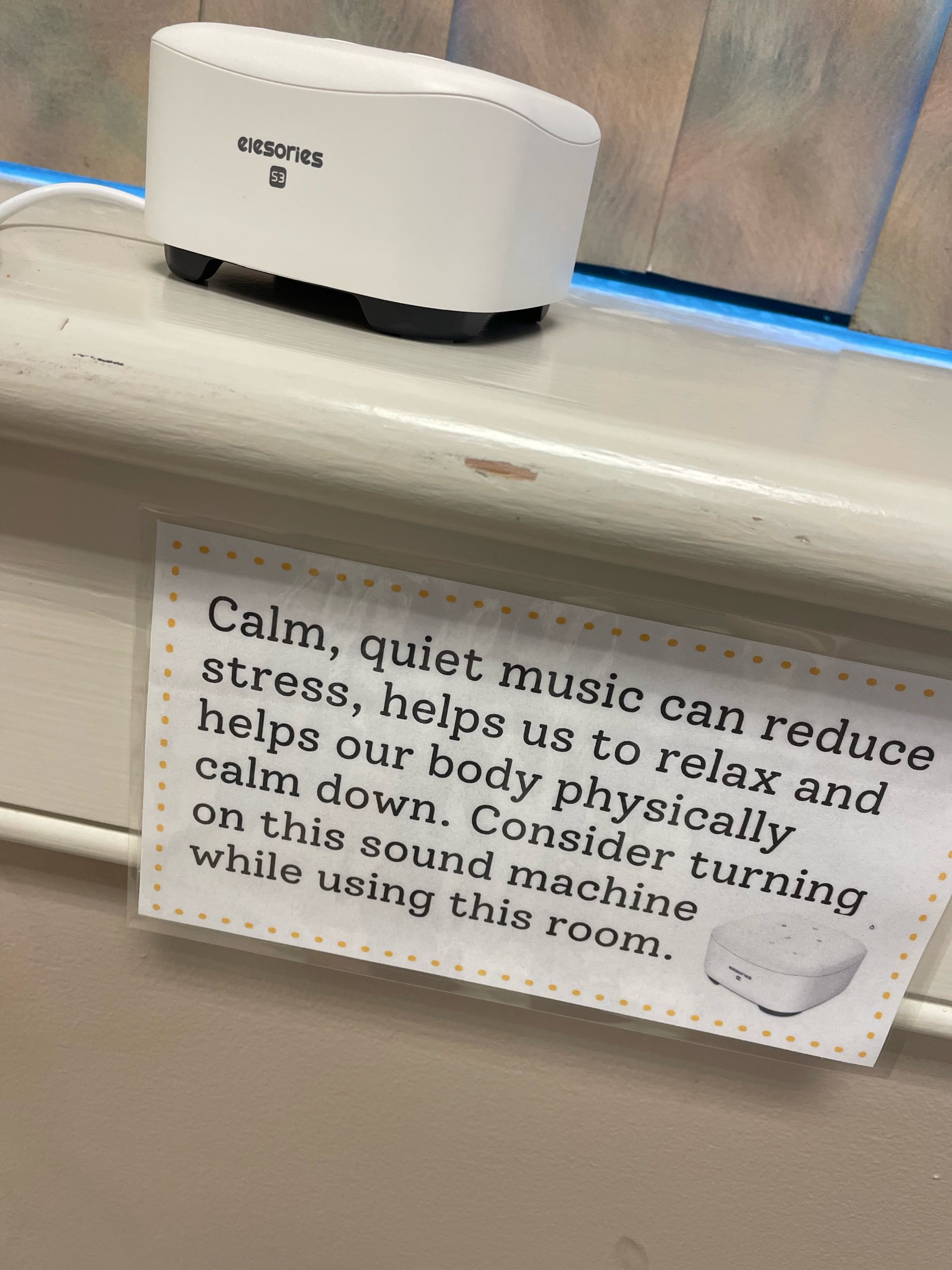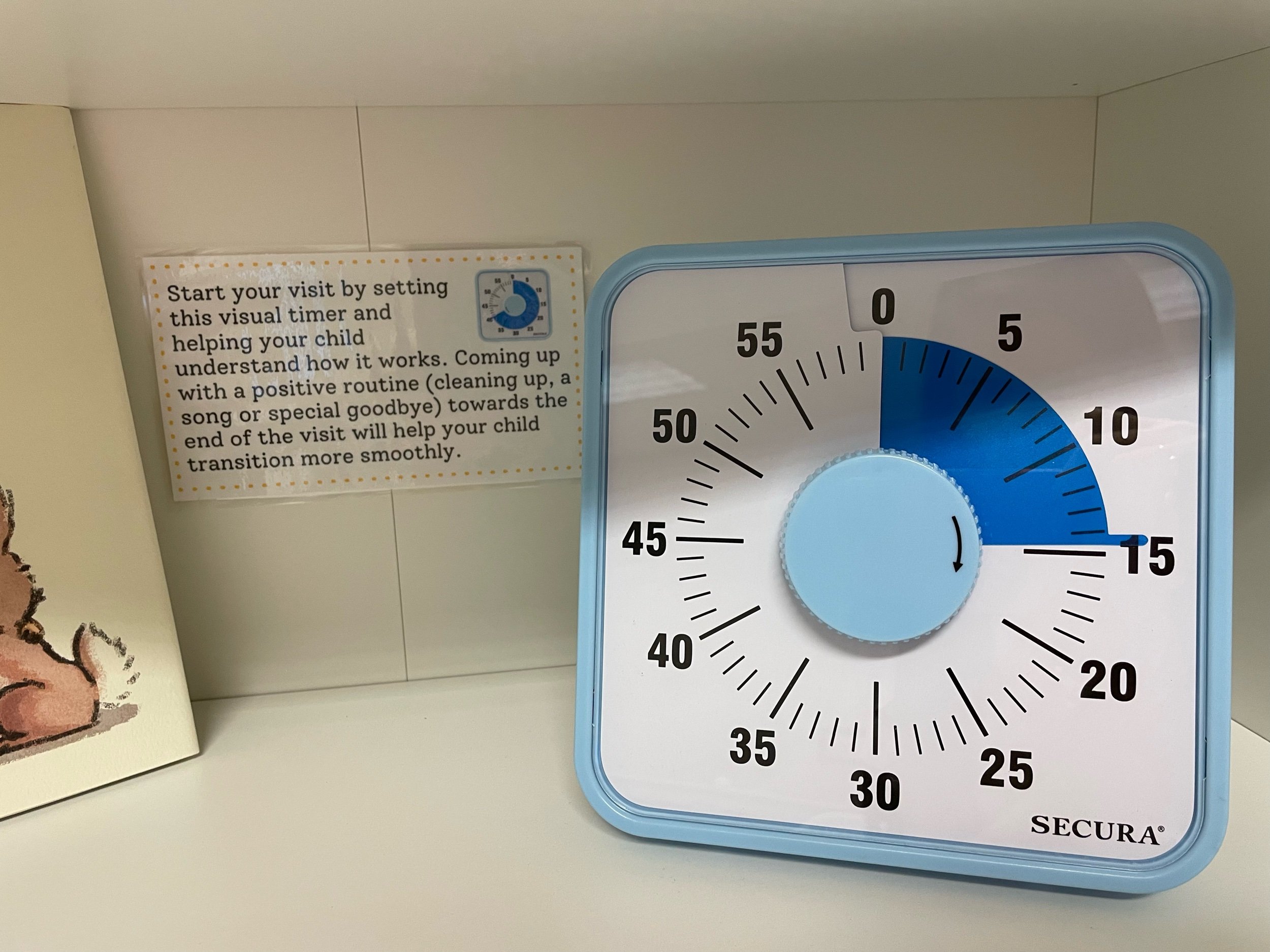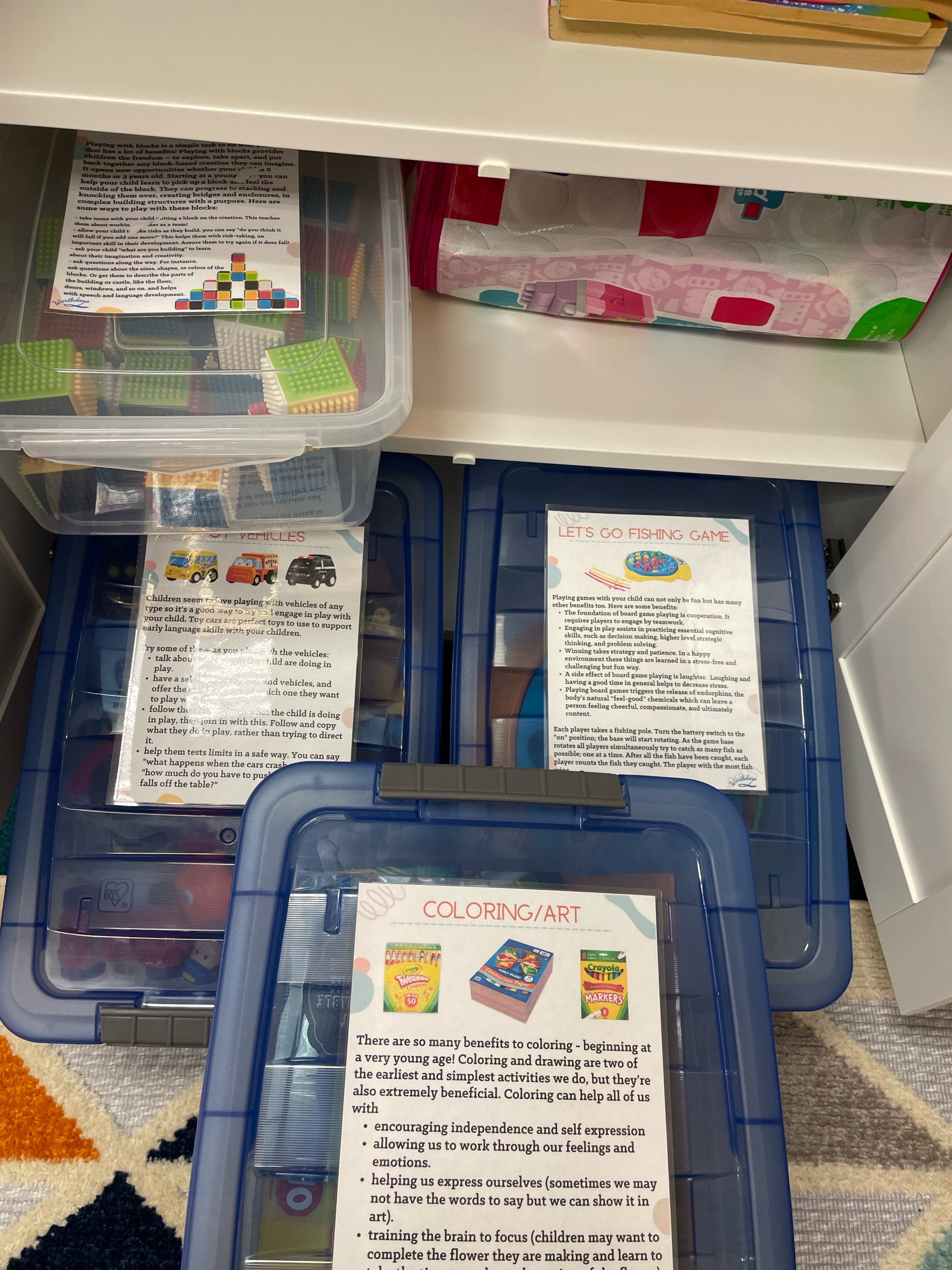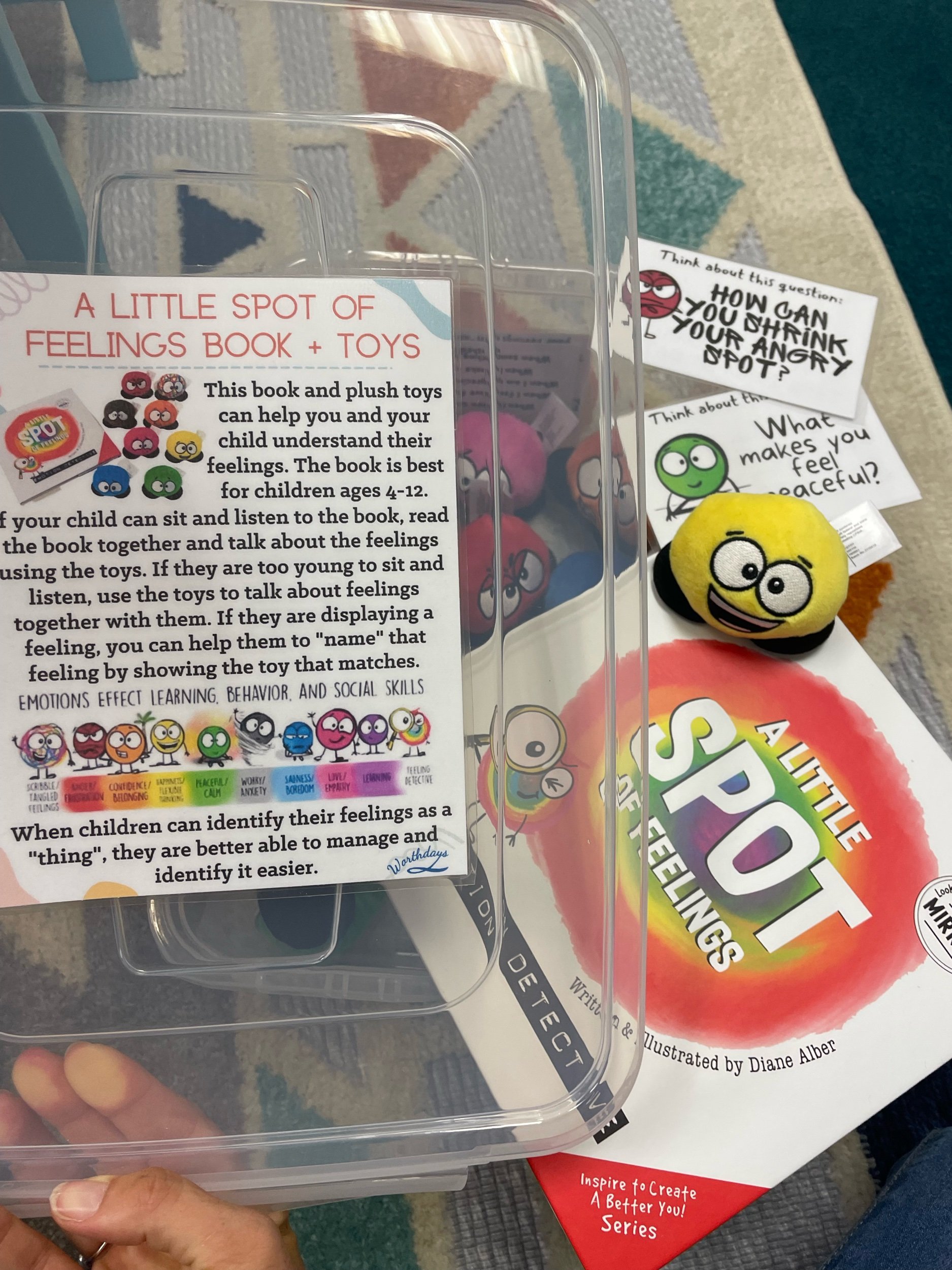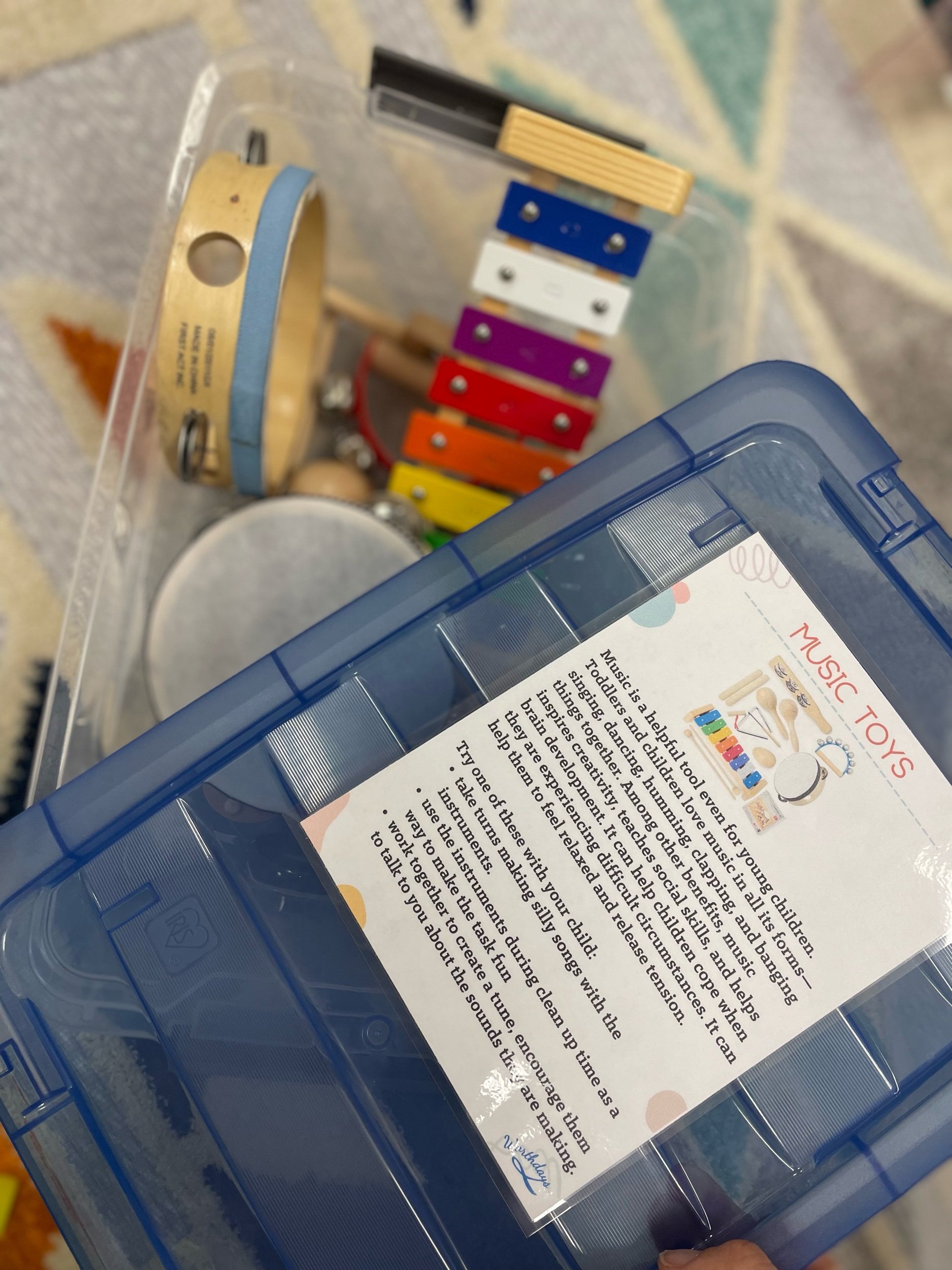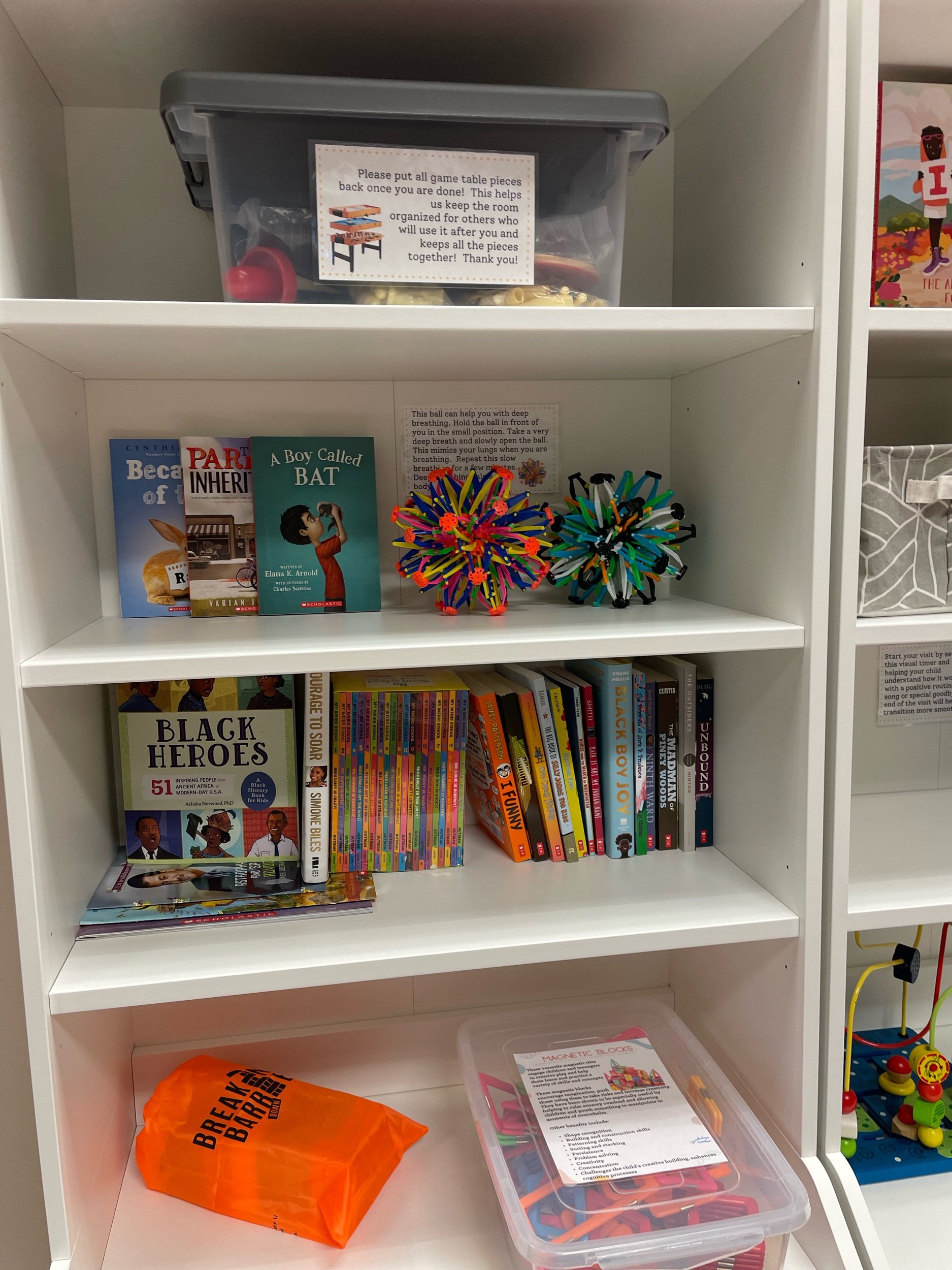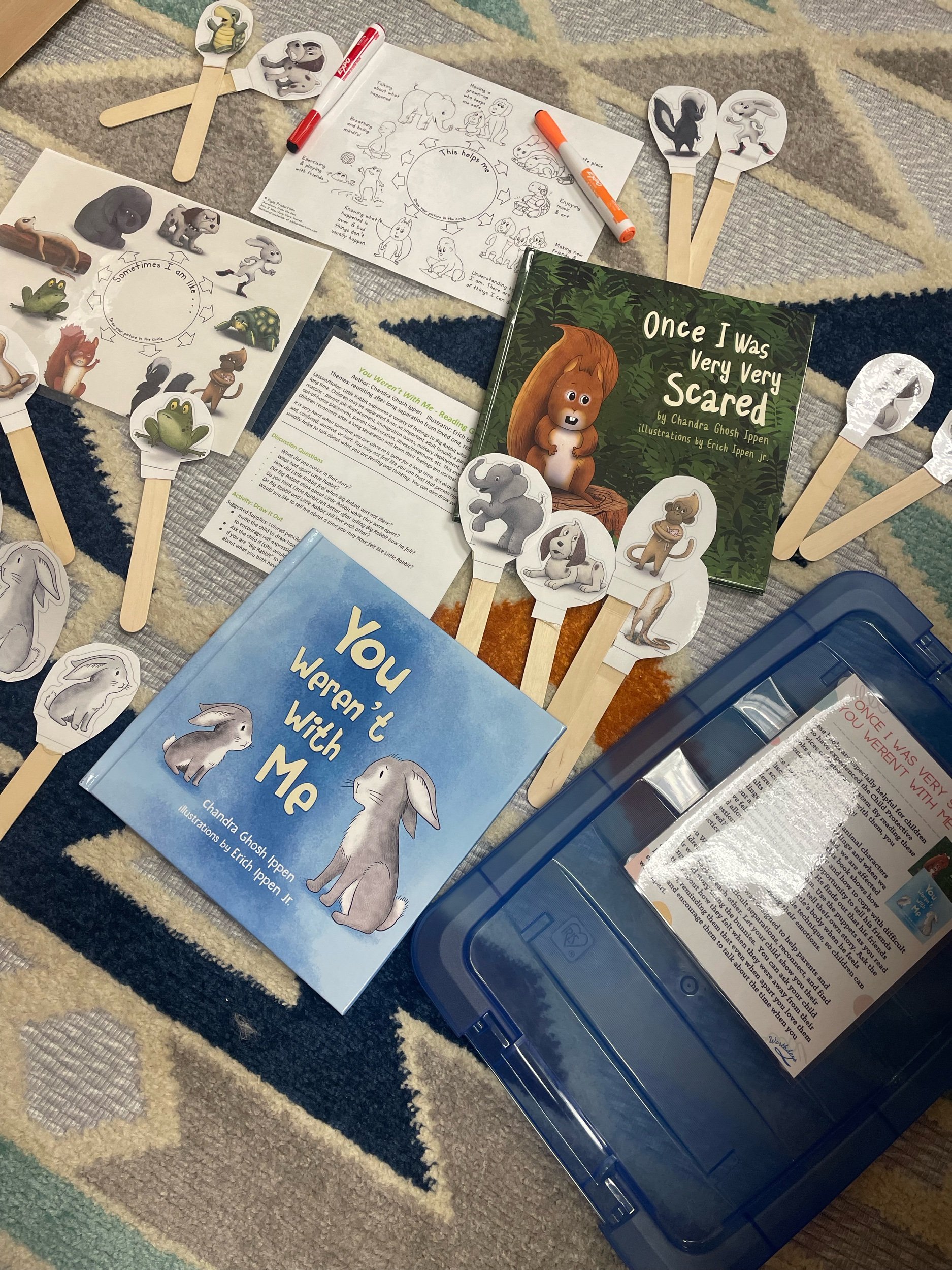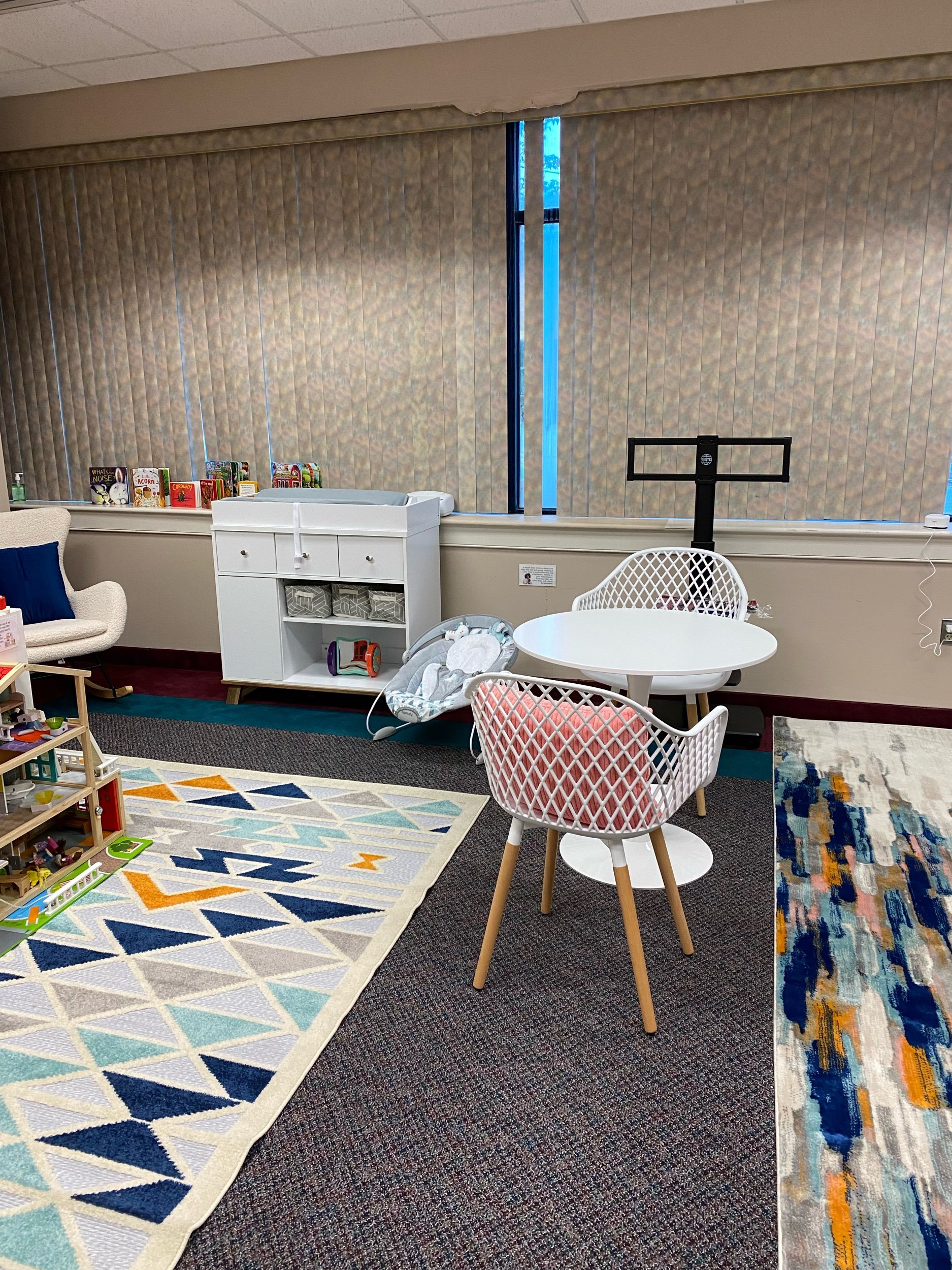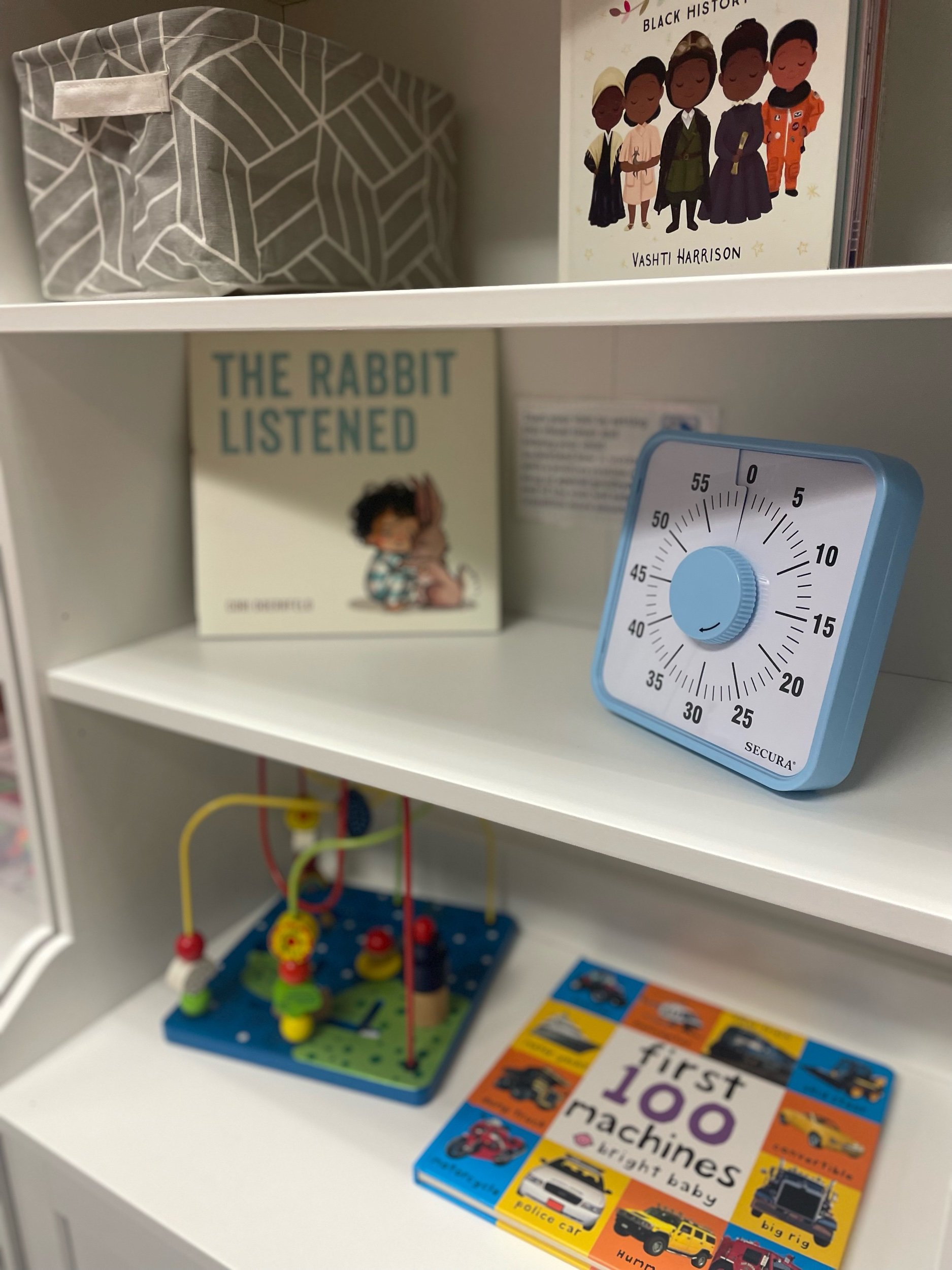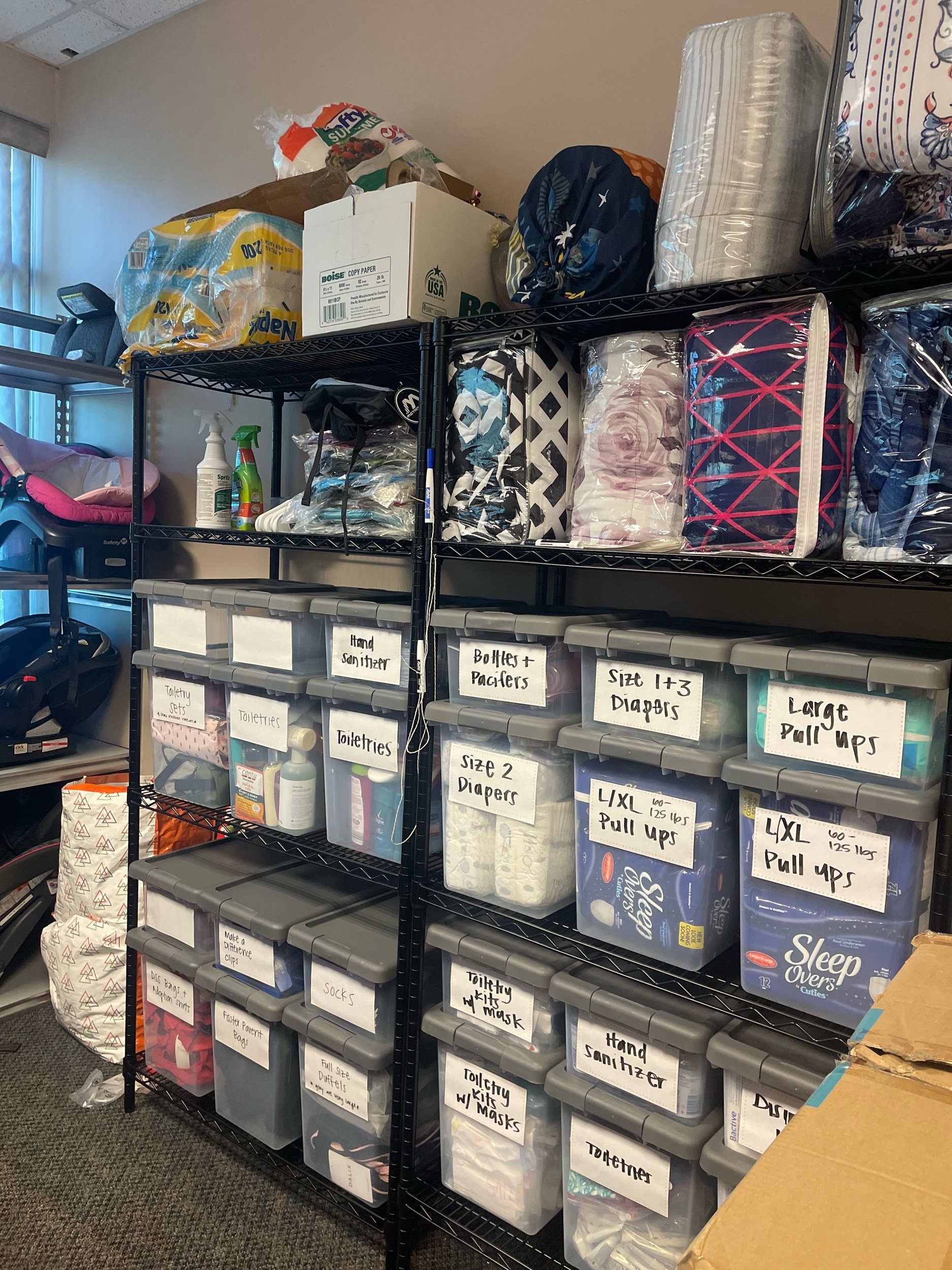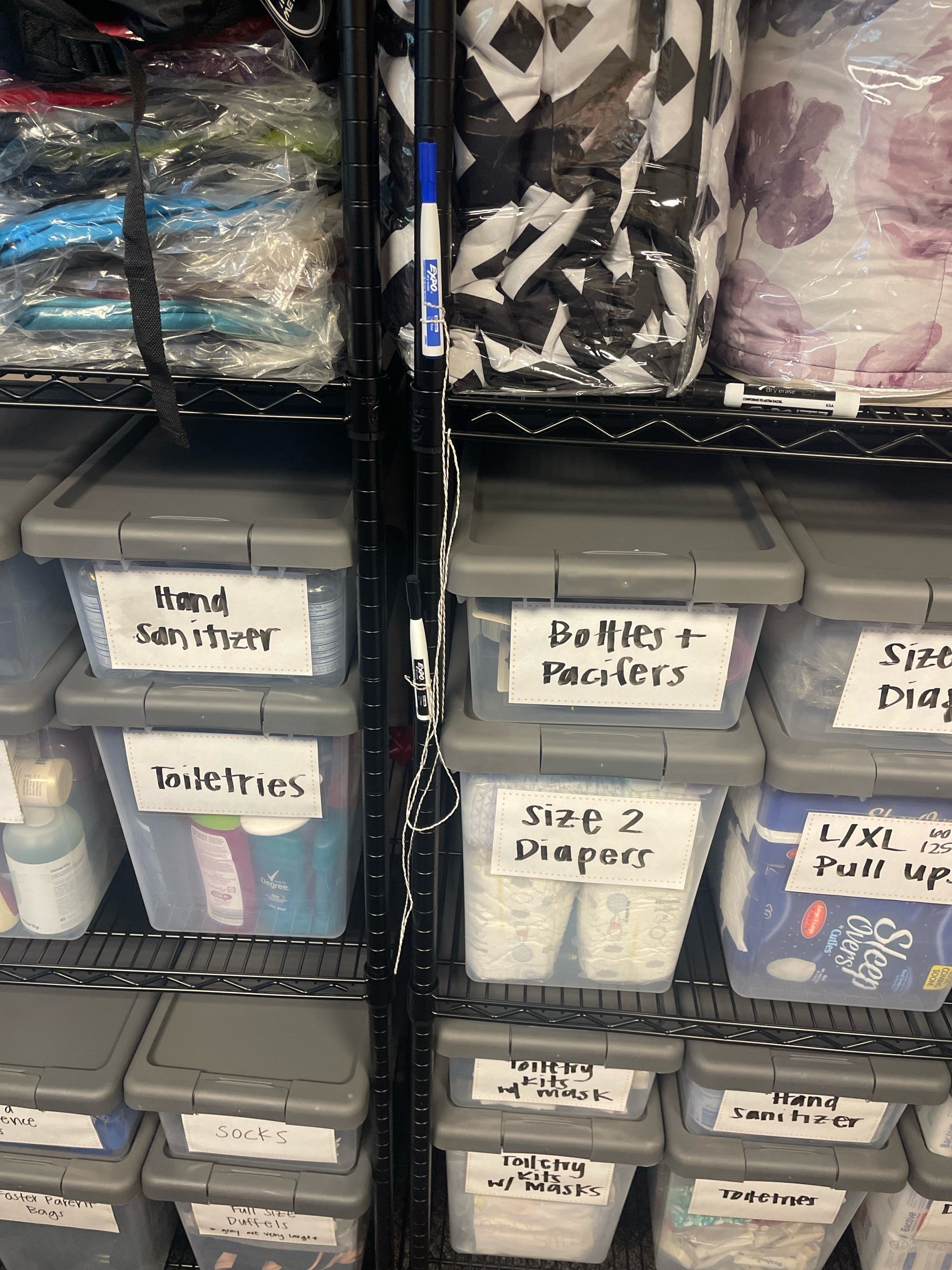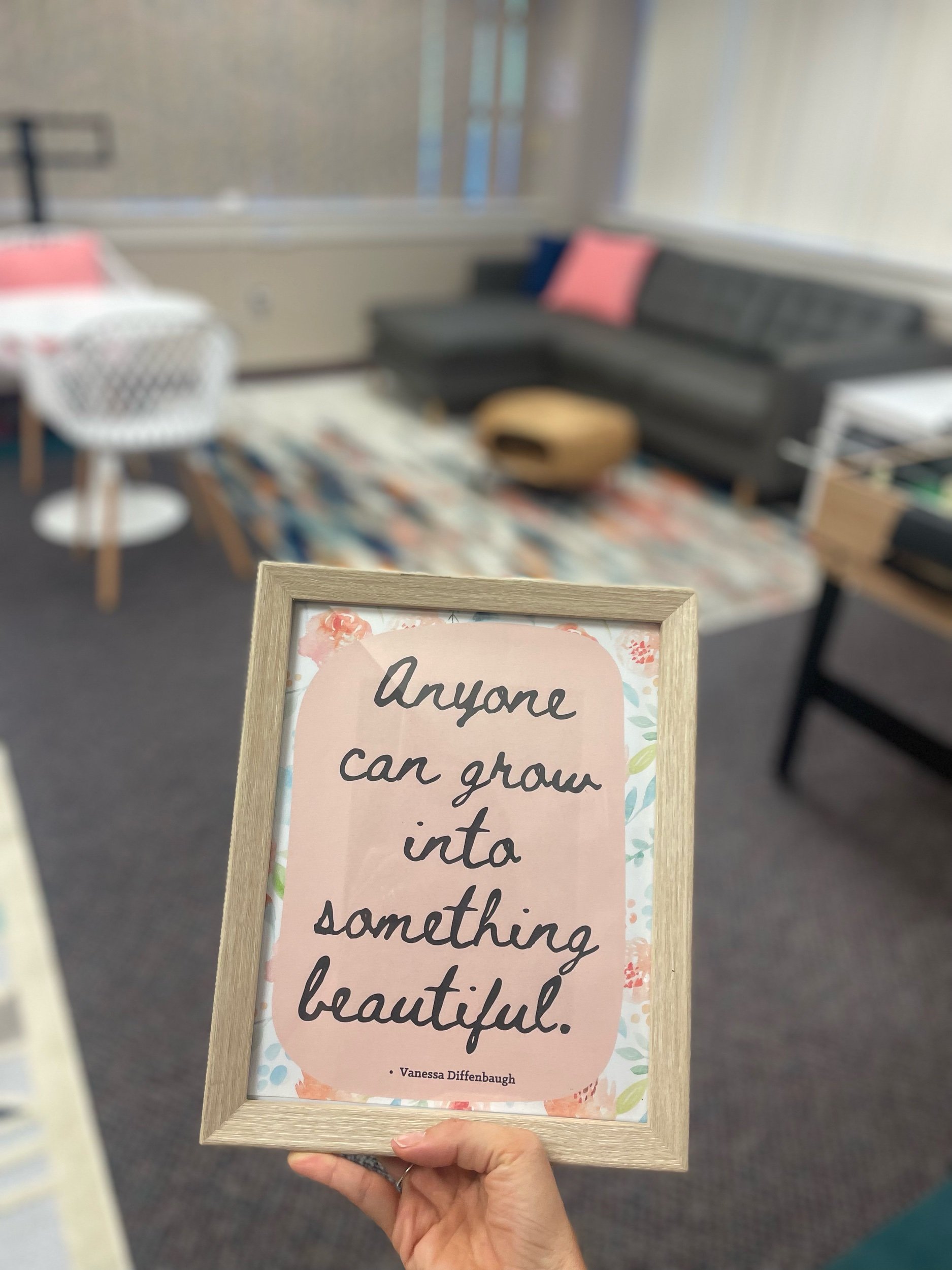Visitation Room Transformation
One of the most well researched tools we have to help achieve reunification for a child and family impacted by the foster care system is the use of visitation also known as ‘Family Time’. Family Time is when a child in foster care visits with their prior caretaker, often times their parent, and others who they may be separated from such as siblings, other caretakers, relatives, etc. Research tells us that Family Time is essential to healthy child development as it helps to maintain parent-child attachment, reduces the child’s sense of abandonment and preserves the sense of belonging to the child’s family and community. Ultimately families that have productive and frequent opportunities to visit with each other have a greater likelihood of being reunified in a timely manner.
When we were contacted by the Petersburg Department of Social Services asking if we could assist with relevant books for their visitation room, it ultimately led to a larger conversation about Family Time and their current space where families visit together. That conversation blossomed into a project to transform the space into one that is trauma-informed and leads to more supportive time when families are in this space together.
In order to make this a space led by the people who will use it most, we gathered data about the children the agency serves and feedback from their staff. Through this process we learned the average age, race and permanency goal of the children who were most likely to use the room. We learned from staff that while the room was most commonly used for Family Time that it was often used for children who had just been removed from their family, too. One staff shared that their vision for the room was “a space to be functional and educational, to support activities like parents reading to the children and playing games which spark conversation”. Many staff shared their desire for the room to be a space that could be used for small meetings or where staff could leave their desk to work and decompress. One staff shared they hoped the room could be ‘a multi functional space where staff was able to work and relax during the day and also where kids and families felt comfortable just being’. Staff identified the following as significant priorities for the space: new seating for children/teenagers/parents/caregivers who were waiting in the small waiting area outside of the room (that doubles as a storage area), items that support engagement with family during visitation time, culturally relevant books and items for teenagers. We identified a few items the agency felt necessary to keep in the room along with the fact that we were not able to make any permanent changes to the room (painting, installation of items, etc).
A critical piece of this project is a volunteer who early on dedicated her time and expertise to make this a huge success. Armed with an interior design degree, a ladder and lots of experience, Ashley Lavin created a beautiful plan for the room that made it easy to implement. With the help of numerous volunteers and many donors, we were able to implement this plan to create a space that will impact many children and families for years to come. It is our hope that anyone who enters this room - whether it be an overwhelmed social worker, a hopeless parent or a child separated from their family - is able to feel a sense of calm and leaves the space with a renewed sense of belonging and purpose.
How the room started:
The room in progress with the help of many volunteers:
The completed room:
Nina of Ninabel Designs who painted and donated the gorgeous painting that adorns the walls of the “waiting area” titled the painting “Grow Into Something Beautiful” which is part of a larger quote from a novel by Vanessa Diffenbaugh. The full quote, from The Language of Flowers, is “Anyone can grow into something beautiful” and it’s the perfect way to describe why we believe in the work we do. Many of the people walking through the doors of this room need a reminder that their life is worthy and that they are full of potential. We hope anyone that walks out of these doors has a renewed sense of their worth and knows they are already in the process of blossoming into something beautiful.
Many thanks to all the donors and volunteers who made this room possible. Special thanks to: Ashley Lavin of Pretties + Papers, Nina of Ninabel Designs, Amanda Lynch of Rethinking Resiliency.
Questions about this transformation? We’d be happy to hear from you - caroline@worthdays.org

